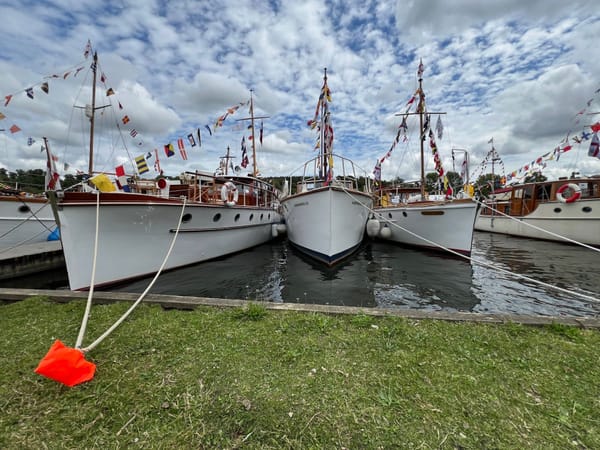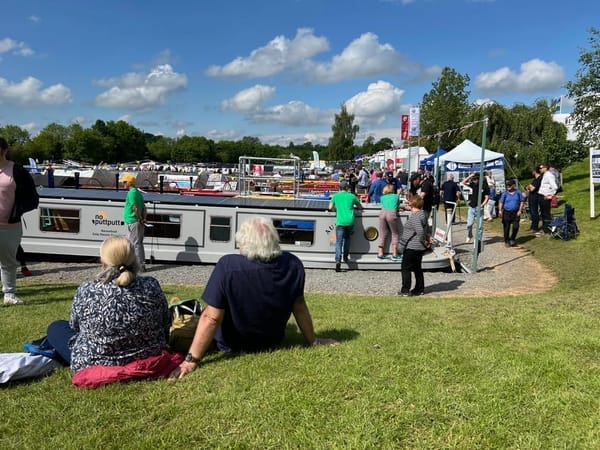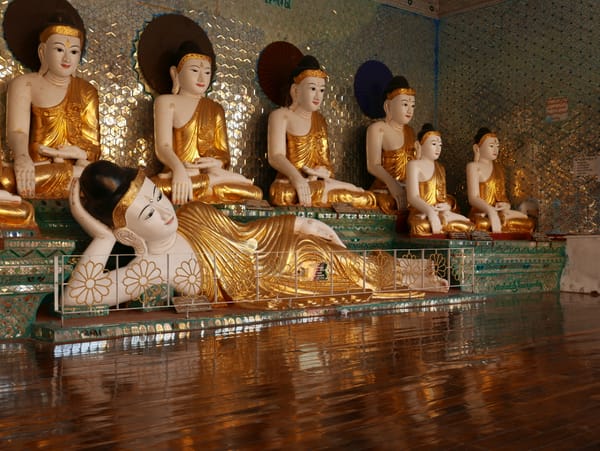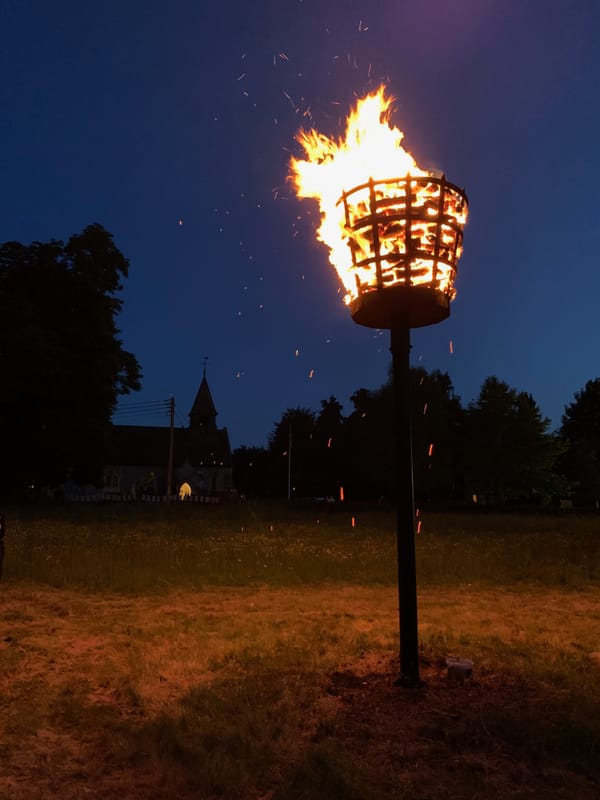Yellowstone National Park in the Winter — Day 2: Early morning briefing and into the Park
Off to the Old Faithful Snow Lodge via some geyser basins and the Wild River
January 2014
Last night (Day 1), we had the “pre-expedition” briefing from our guide, Amy. In the briefing, she went over the plans for the trip and gave some insights into what to wear (lots of layers) and how things would be run.
Amy — our host
We were fortunate to have Amy as our host for the trip to the park. Over the four days, she did an excellent job of keeping us safe, informed and entertained. She was a very gifted educator that had a real passion for what she was teaching. Although, she did seem slightly obsessed with snow.
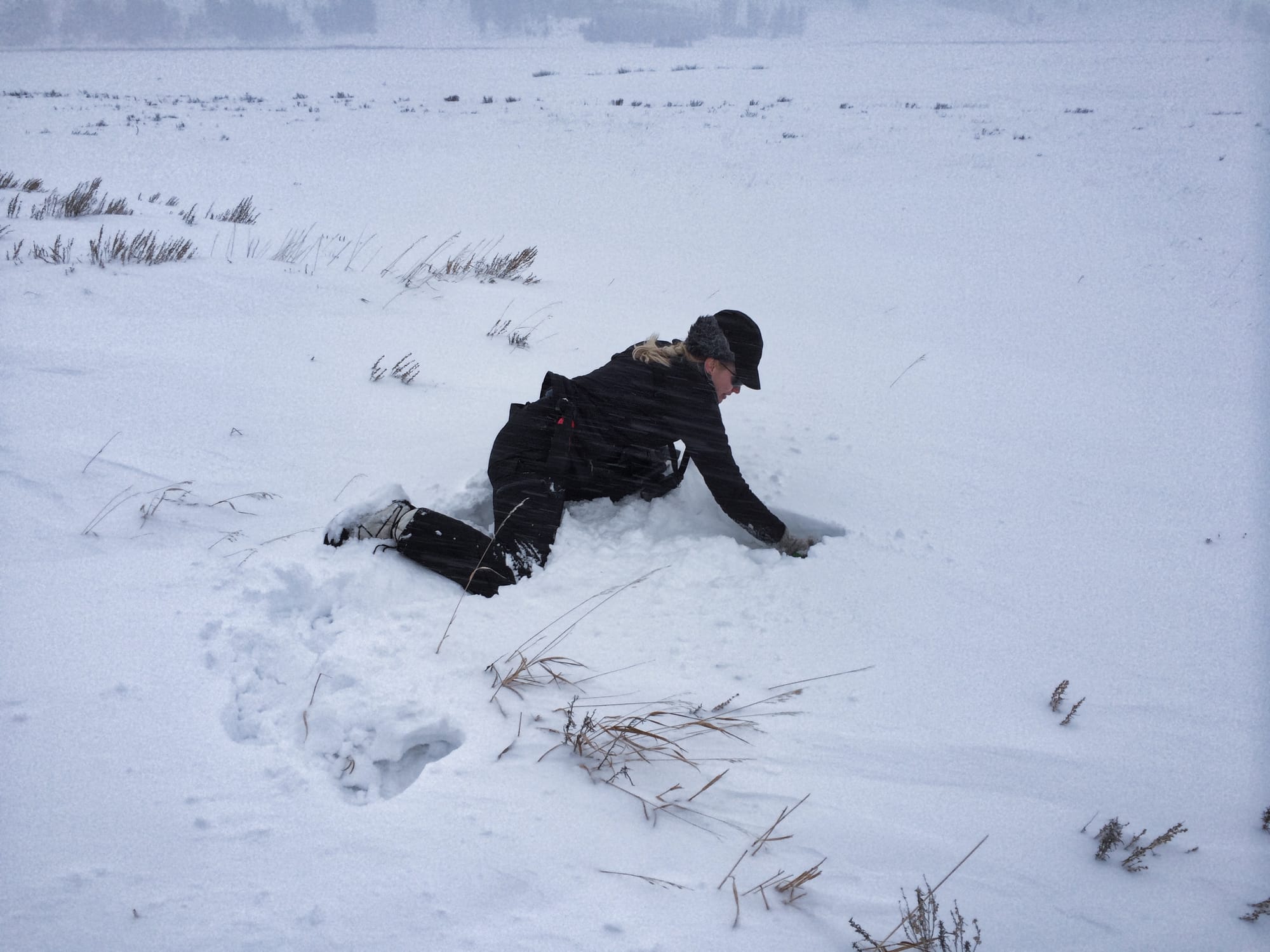
In the above photo, Amy explains how the snow changes as it packs down. She showed the different layers as she dug through the 18 inches (ca. 46 cm) of snow. She also demonstrated with a laser thermometer that it got warmer as she dug closer to the ground.
She told us that the final layer of snow is called sugar or hoar snow, and it was much less dense with loose granules of snow. As the layer was soft, small mammals could construct tunnels to move around the landscape and find food in the winter months.
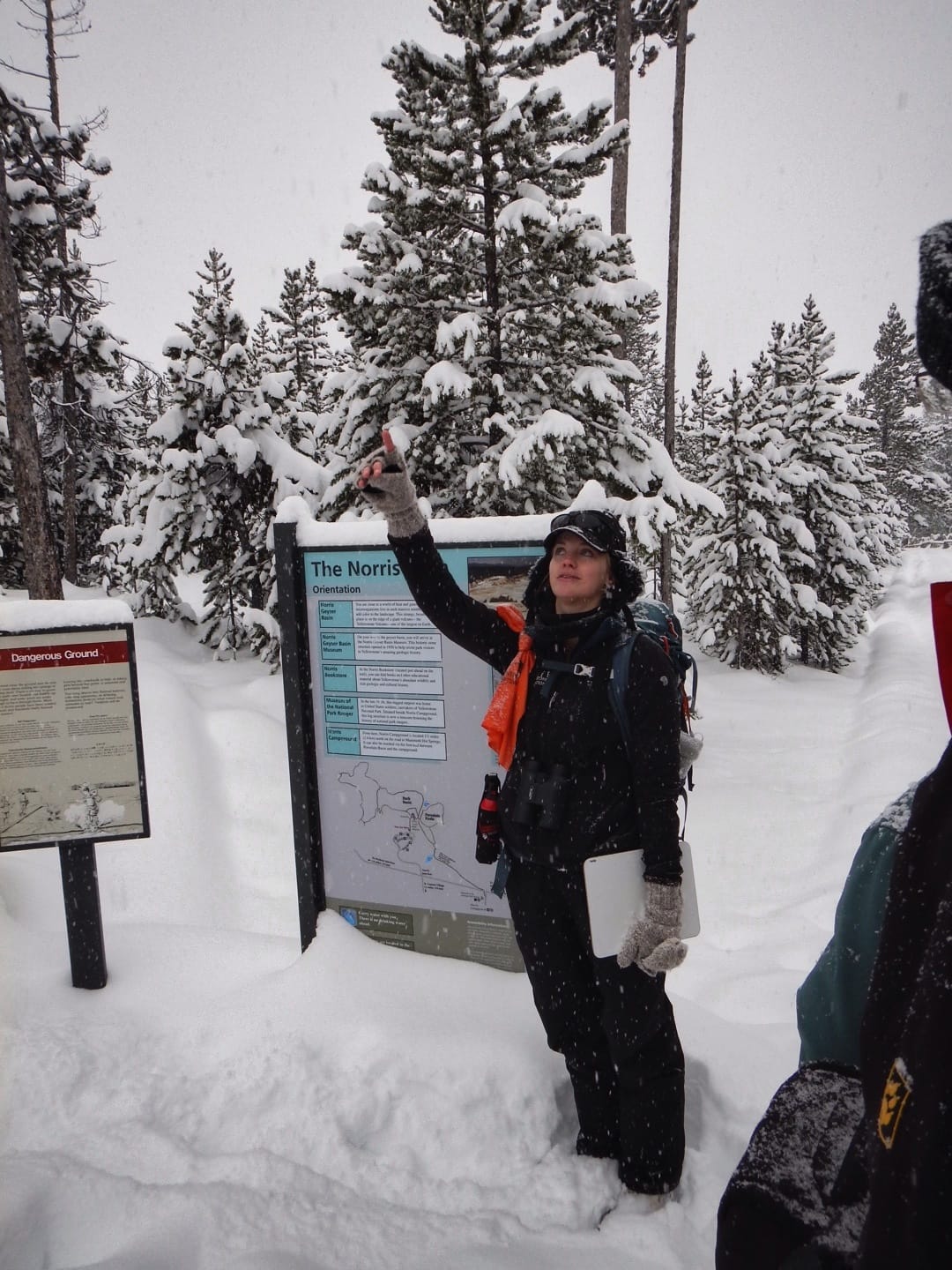
And make no mistake, the snow was deep in the park.
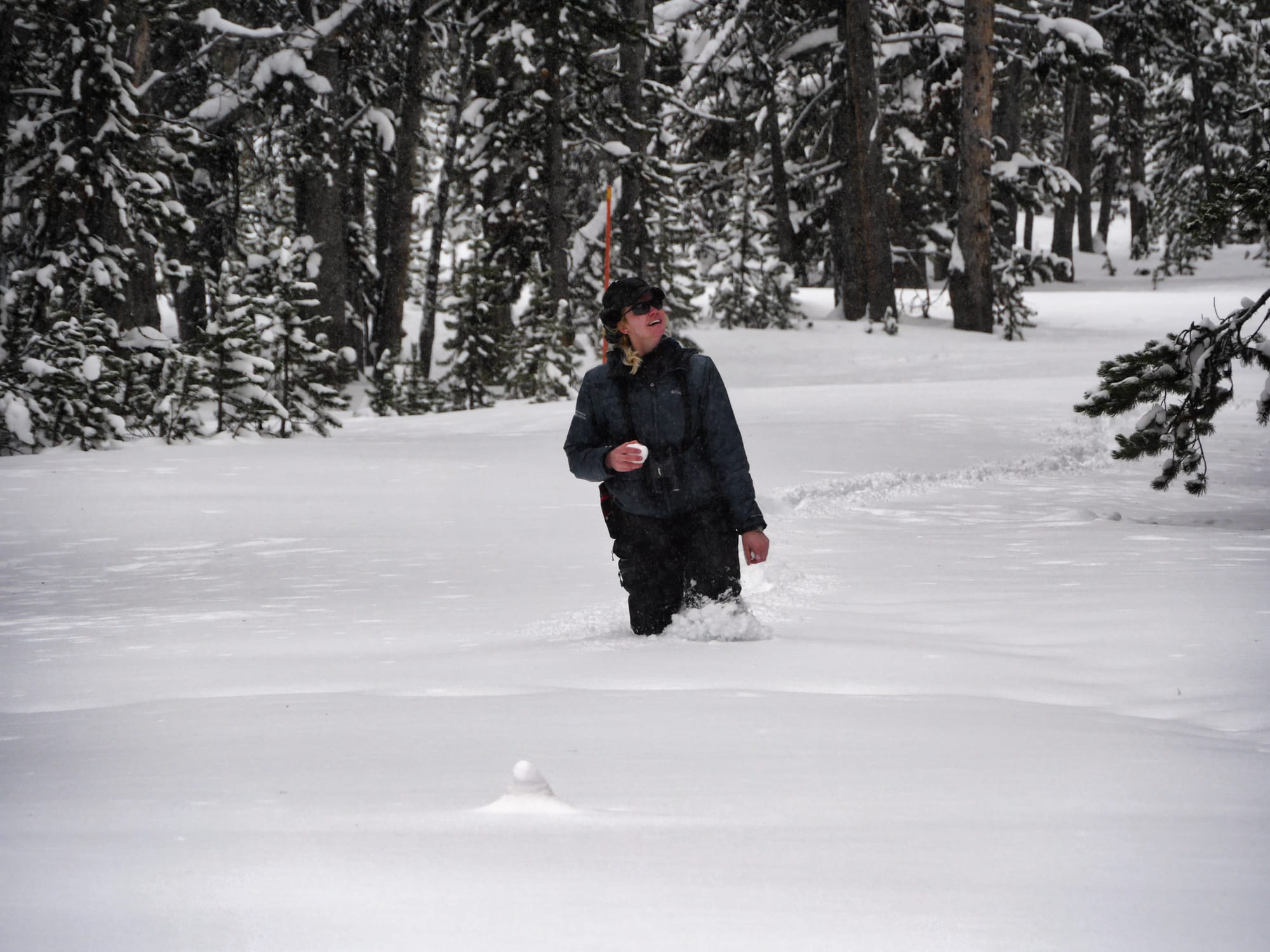
Morning Briefing
We assembled in the hotel lobby around 7:30 am for the morning briefing and to meet our driver.
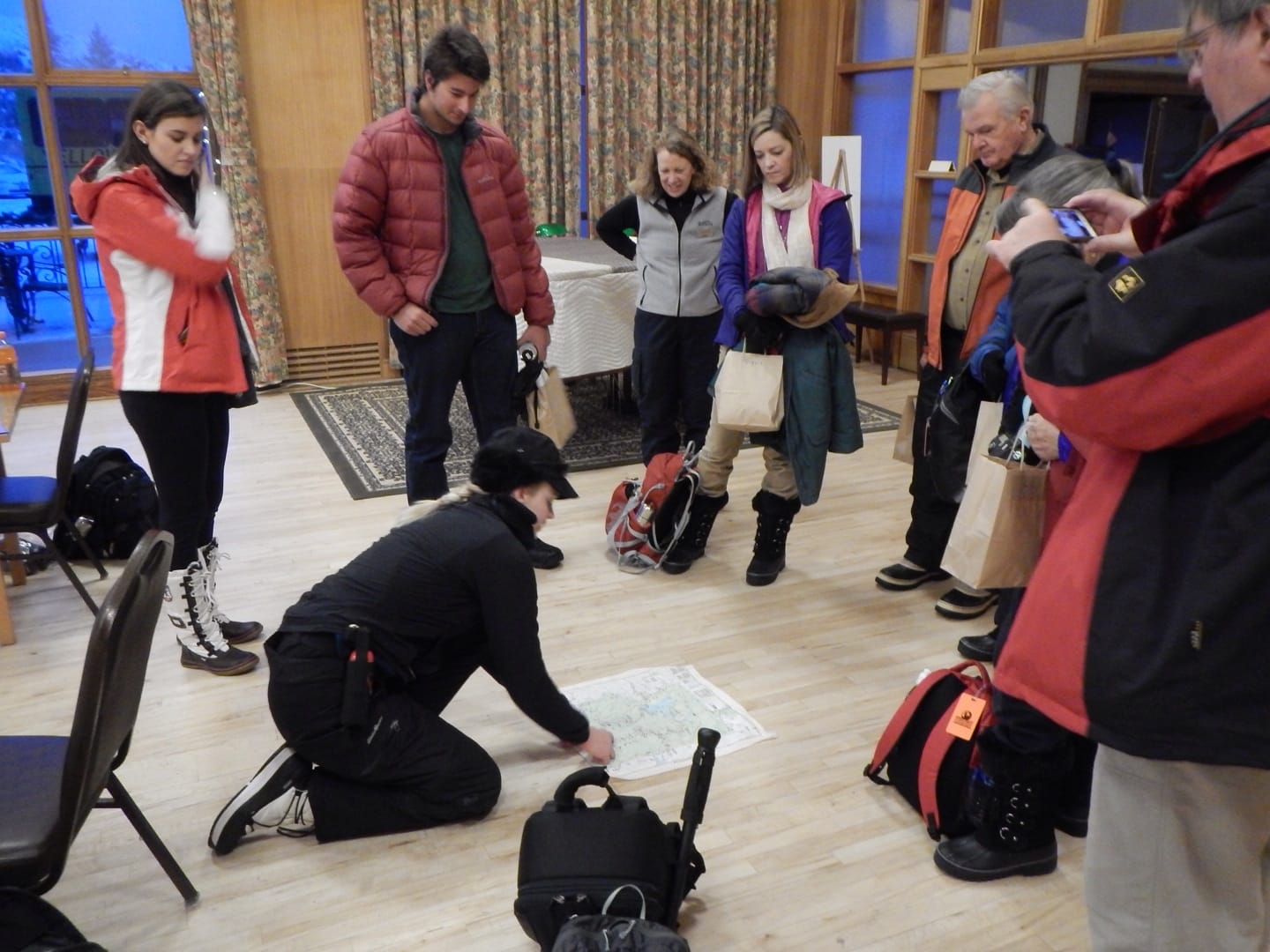
The weather wasn’t great — very cold, grey and overcast. When we left the Mammoth Hot Springs Hotel, the temperature was around -8 ºC (17 ºF), and it stayed well below freezing all day. During the day, I would guess we picked up about 4 inches (ca. 10 cm) of fresh snow, maybe more. The light was terrible, very flat and grey — and I am using that as an excuse for the poor quality of the photos.
On the road in a Snow Coach
The winter road conditions in Yellowstone were terrible. The only way to get around was by either snowmobile or snow coach. Our ‘trusty steed’ for the day was this:
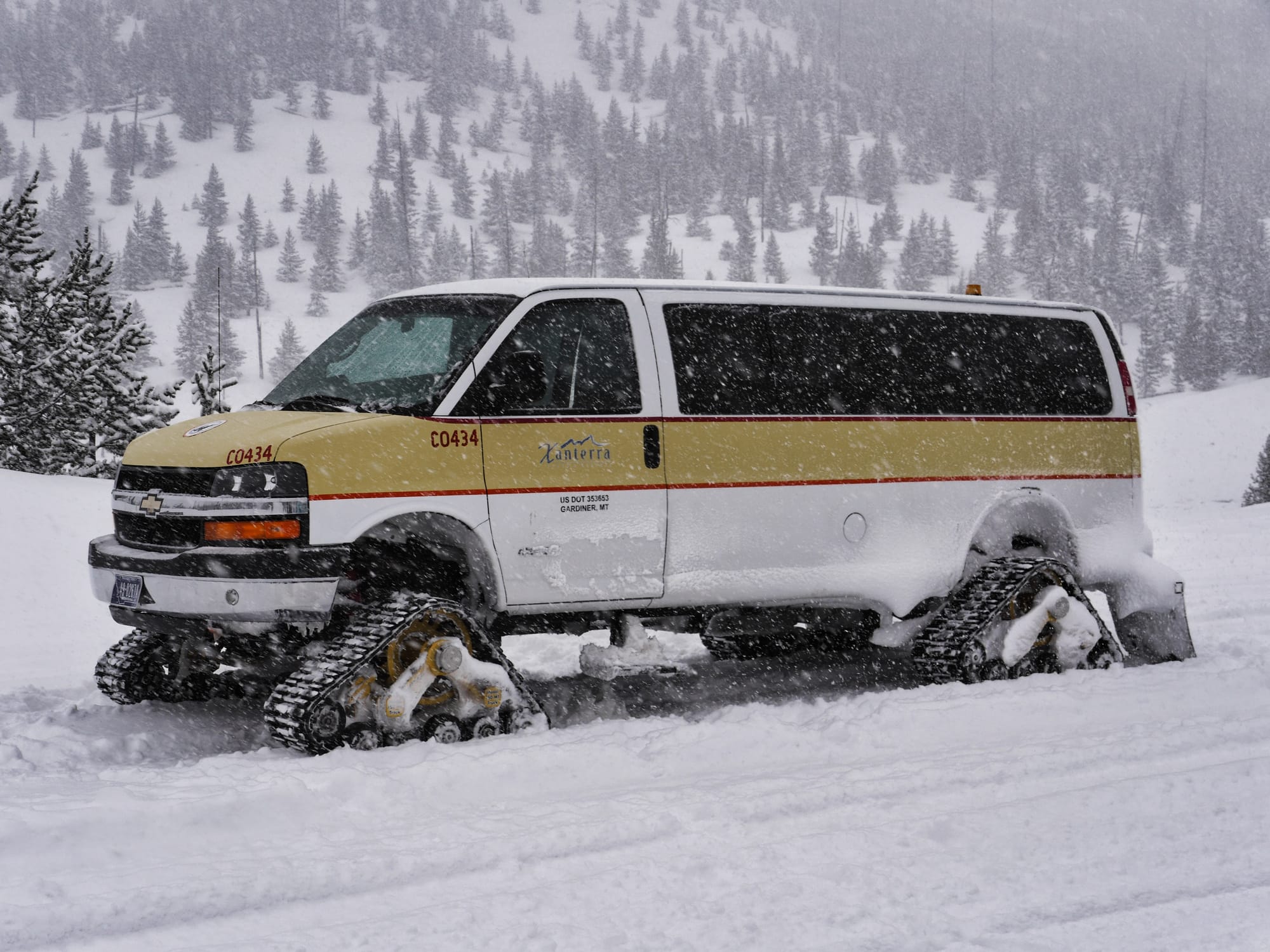
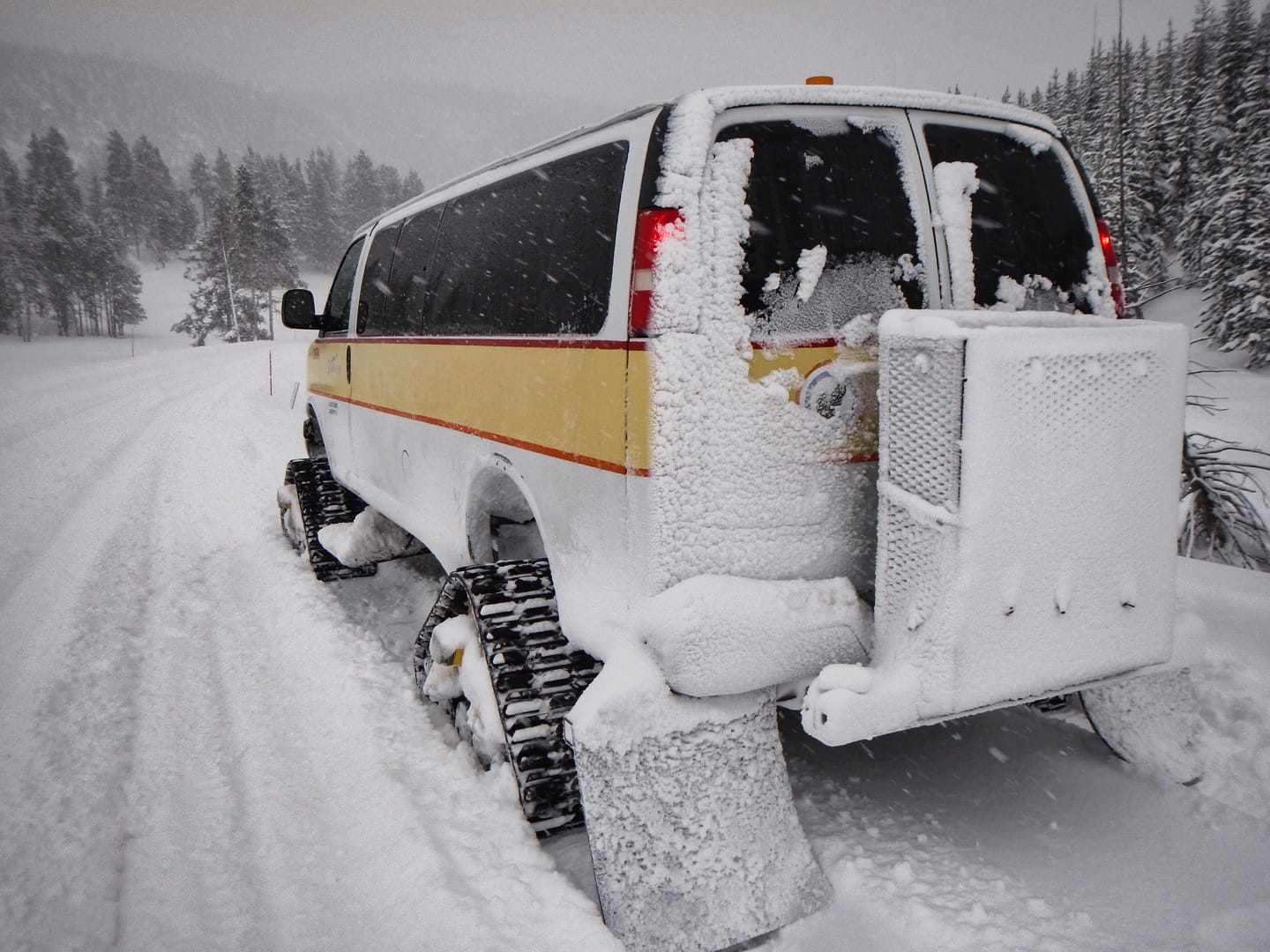
These beasts were fantastic, and there were several styles. They were smooth on the road, but there were some problems. The tracks were liable to ice up, which meant they could freeze solid when the coach stopped. Hence, every time we stopped, the driver would wander around the coach whacking the tracks with a big stick to prevent them from freezing.
Also, the rev counter and speedometer gave odd readings. When I looked, I was shocked to see a reading of 60+ mph (ca. 100 kph) when we were travelling at around 20-30 mph (30-50 kph). The rev counter showed 3,000 rpm.
The tracks cause the false rev and speed readings. The mini-bus was not designed to have the wheels replaced with tracks. With the engine working so hard, it is liable to overheat, and the driver had to keep a close eye on the temperature gauge. It was odd to be in such cold conditions and concerned about an engine overheating.
Another issue was that because the engine was working so hard, the coach only got about 1 to 2 miles to the gallon (0.3 to 0.6 km per litre). This meant that we had to refuel from jerry cans towards the end of our trip.
The Mattracks ‘wheels’ on the snow coaches were terrific. Thanks to the design of the tracks, we were able to get around the park.
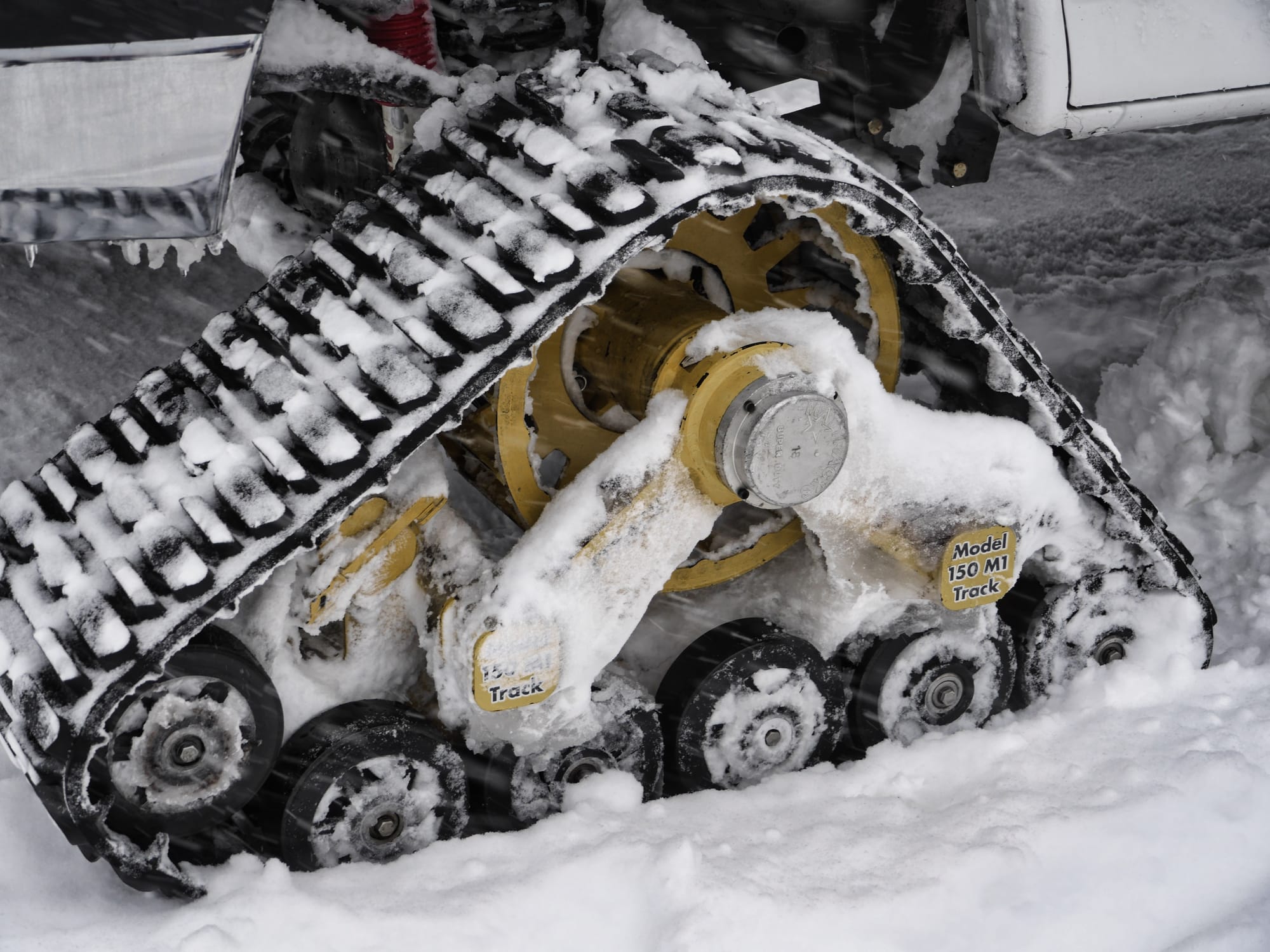
The Mattracks were ‘invented’ by the 11-year-old son of the company’s founder.
Another problem with our coach was that it was rather cramped, and the windows were liable to mist up (we were provided with a wipe cloth), which wasn’t great on a sightseeing trip.
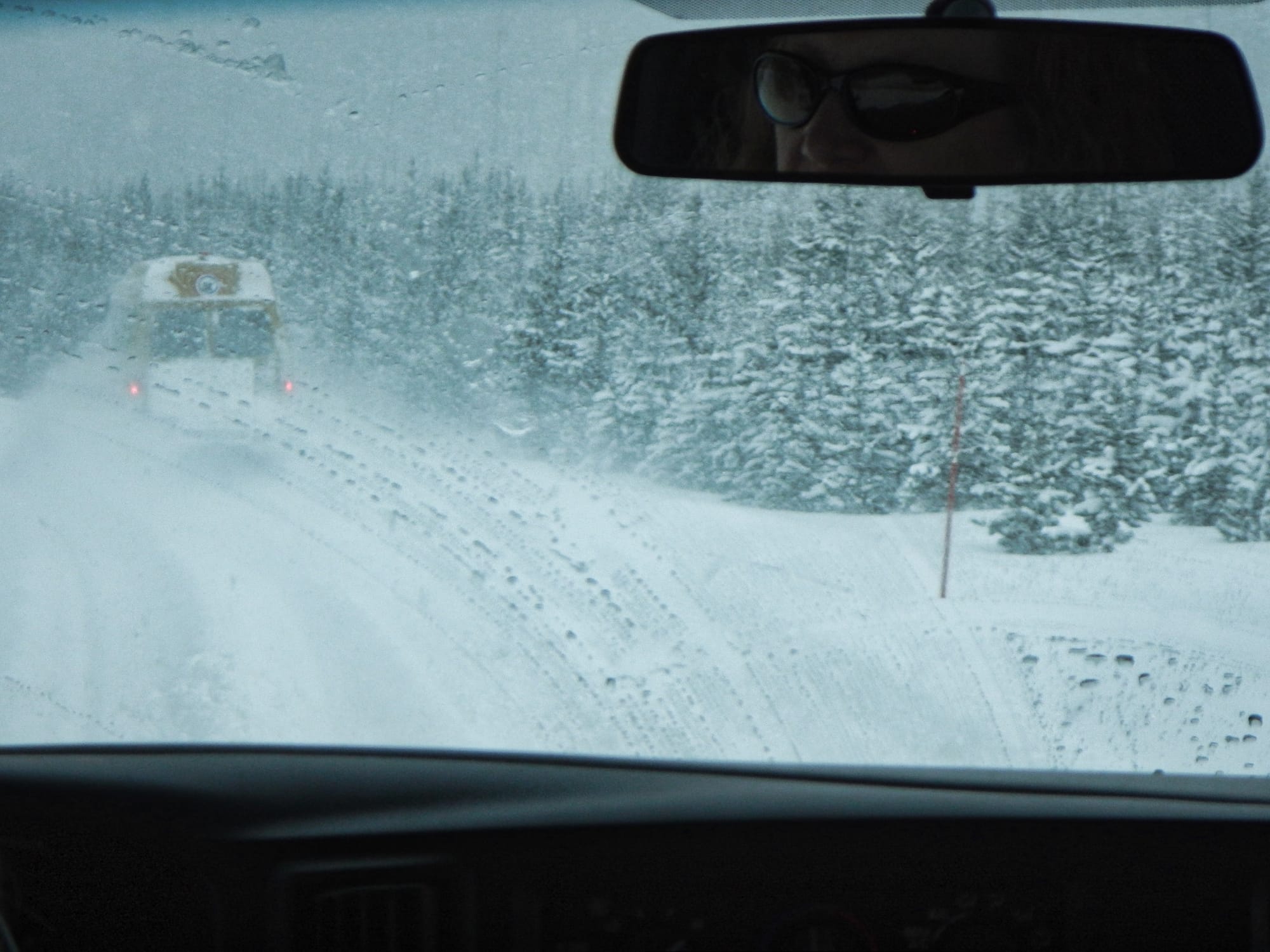
Conditions were bad.
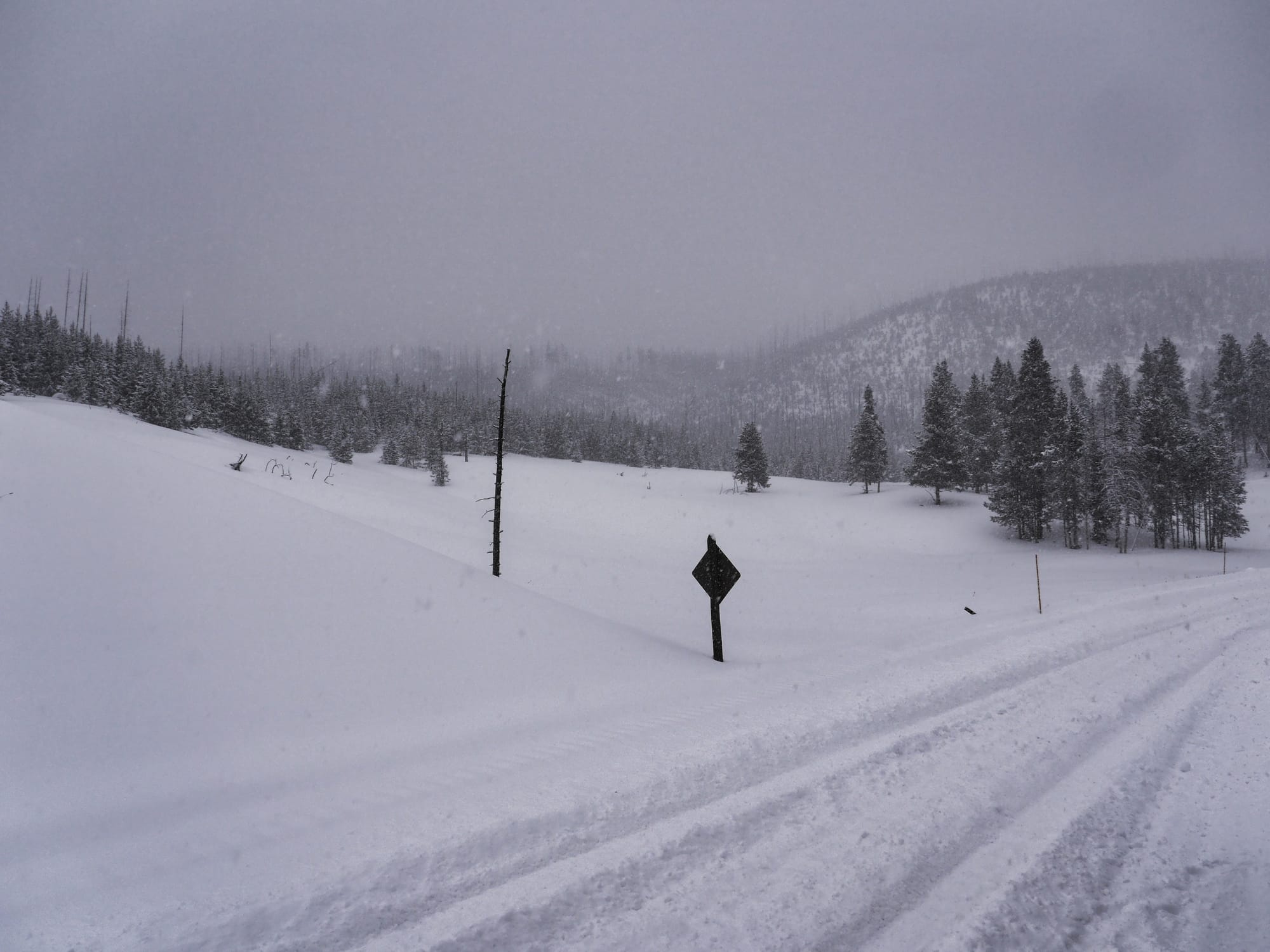
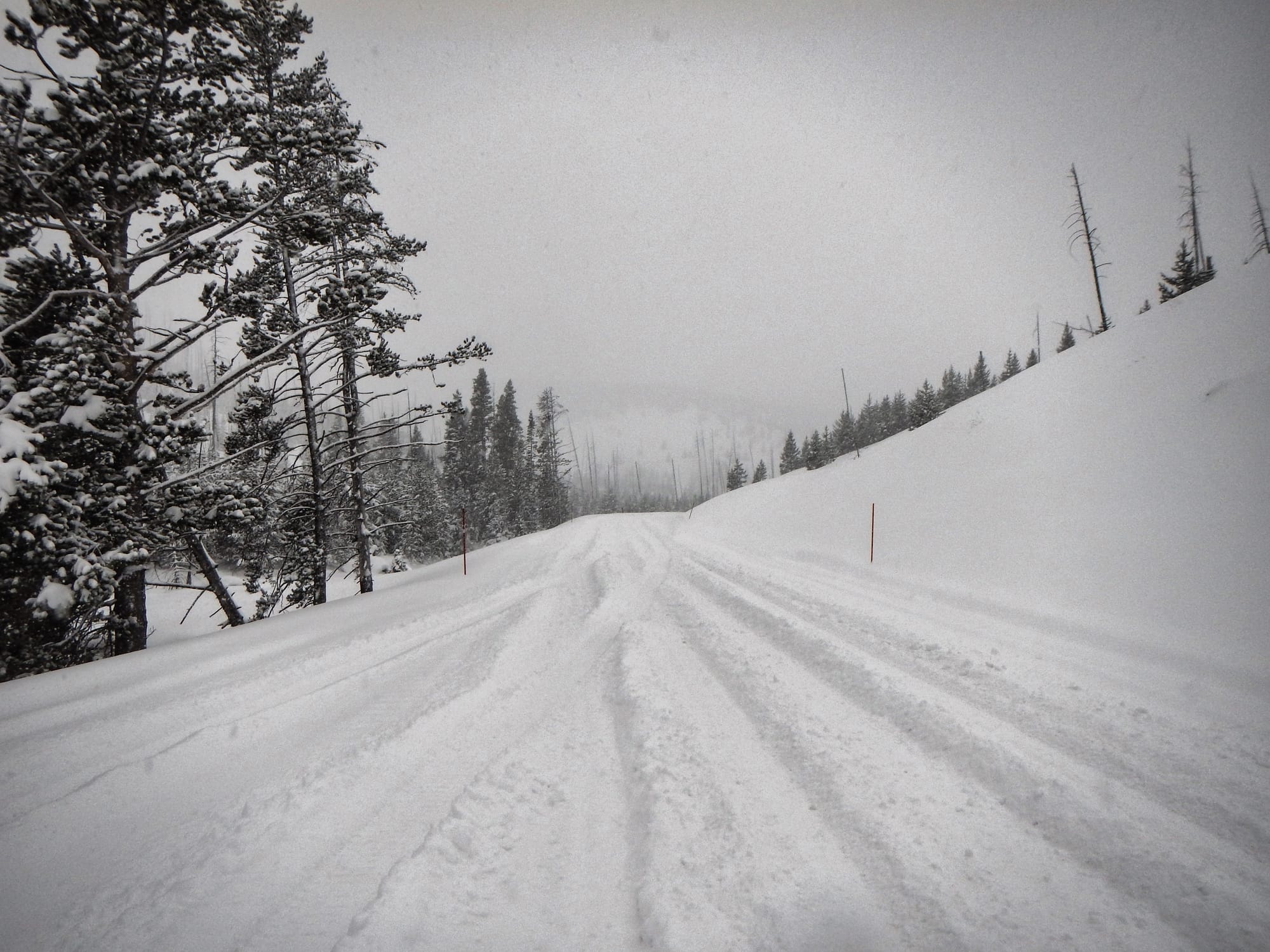
But the scenery was stunning.
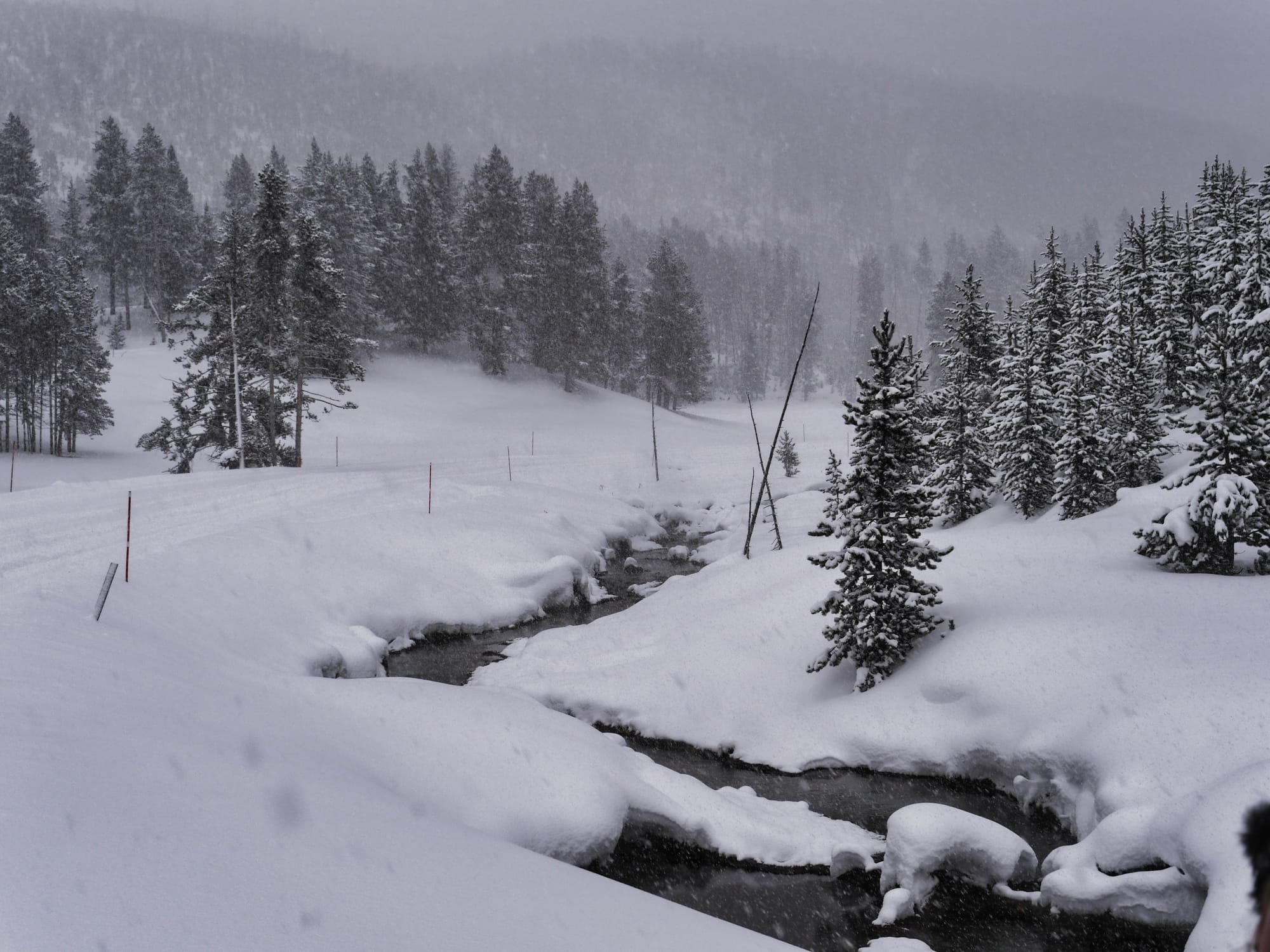
Our snow coach wasn’t the only vehicle out, and during the day, we saw some other examples:
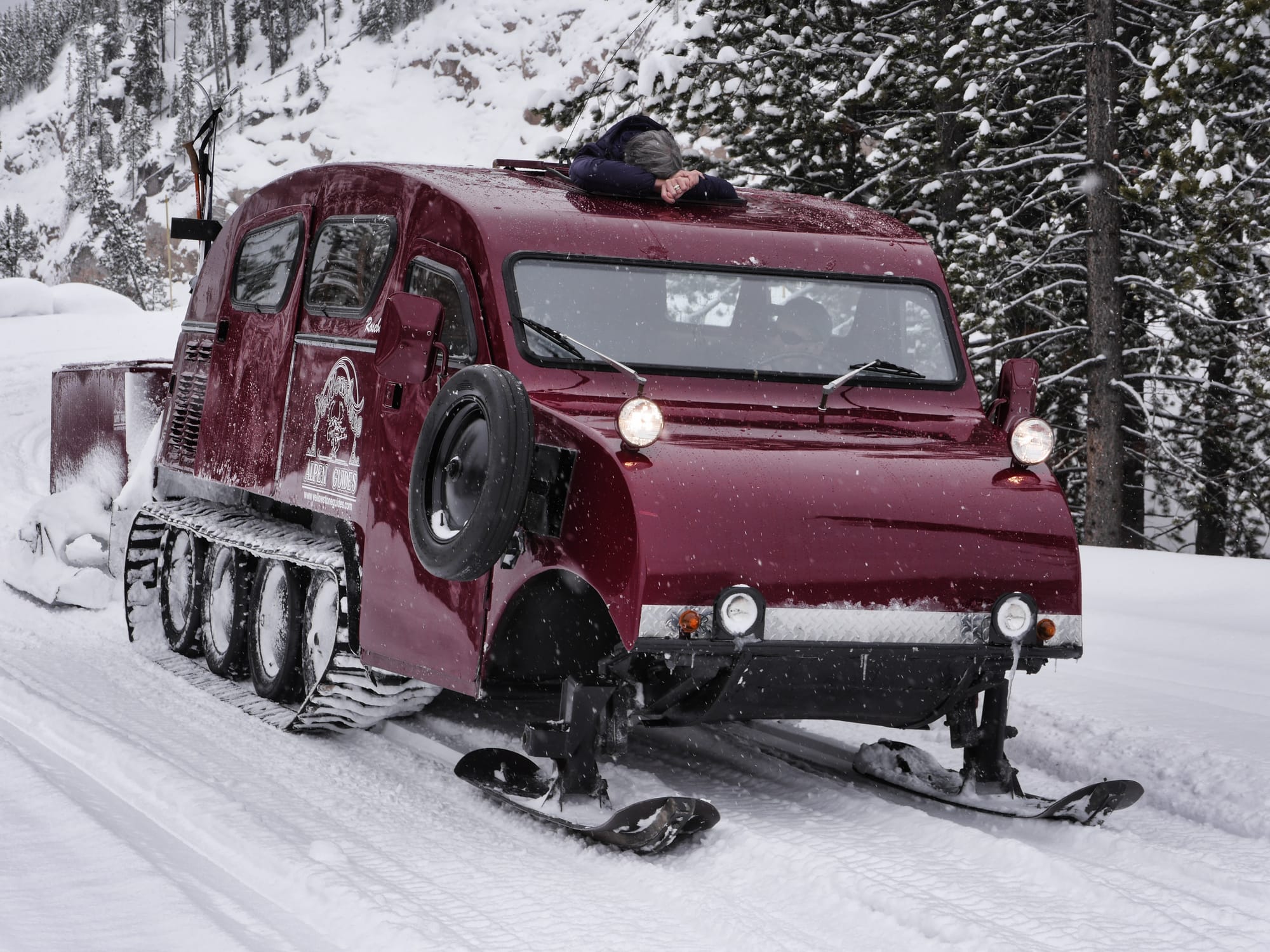
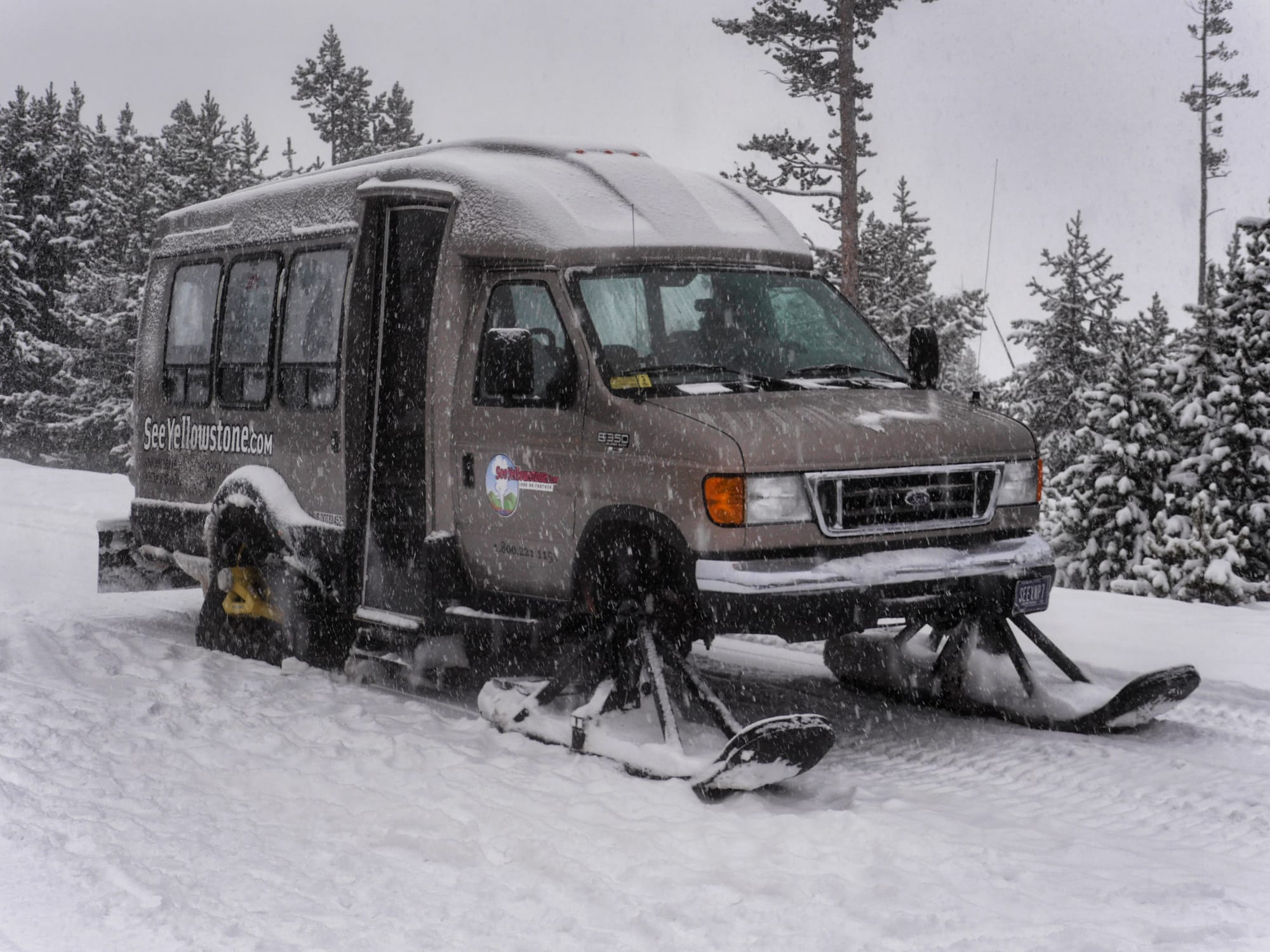
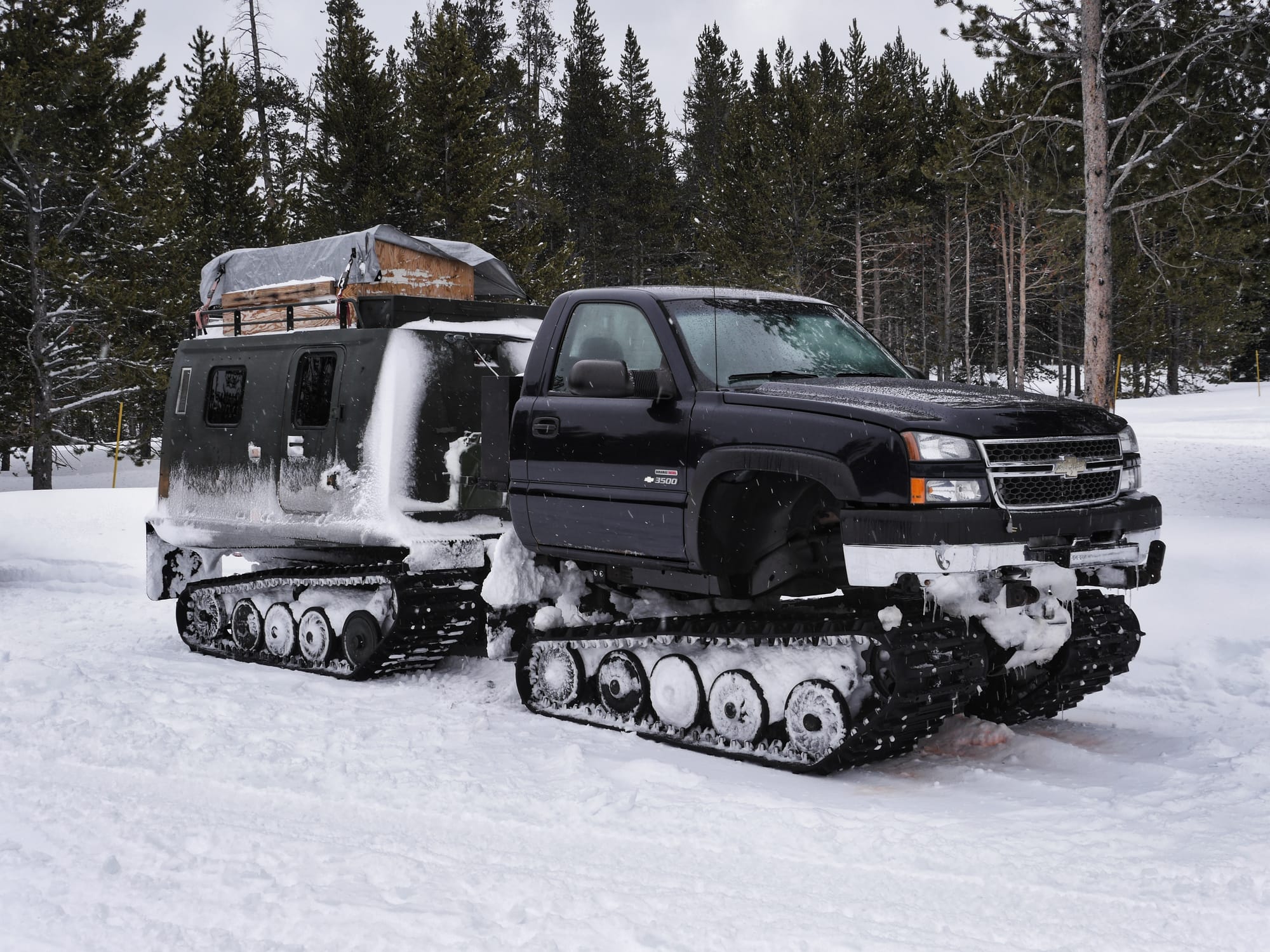
Workers used the above coach to get around the park. It seemed to be half truck, half caravan.
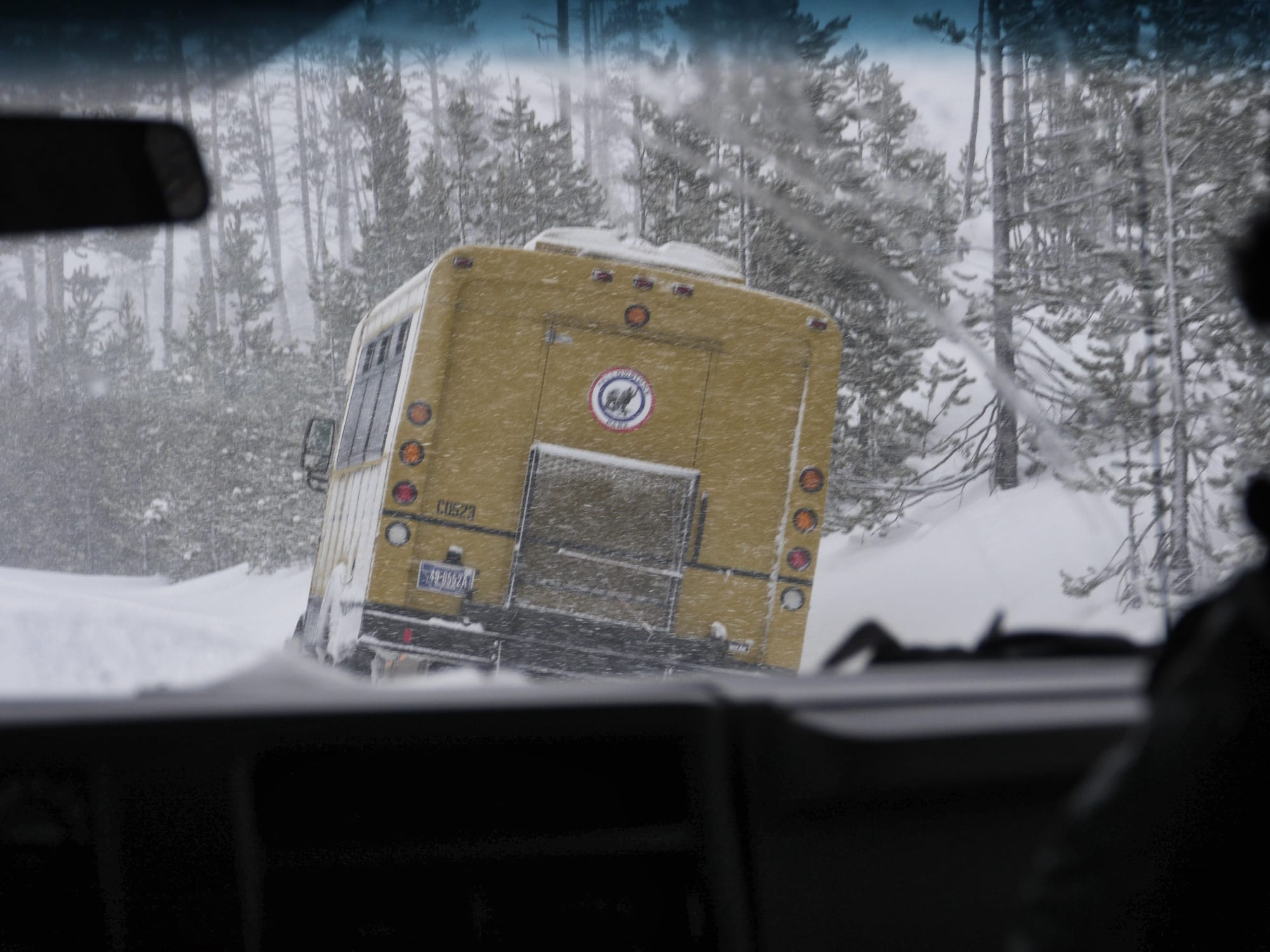
Even with Mattracks on the coaches, things can still go wrong. The snow coach in the above photo had slipped off the road and had become stuck in the ditch. All the snow coaches were in radio contact, and the passengers were picked up within 30 minutes.
Roaring Mountain
Along the way, we stopped at Roaring Mountain.
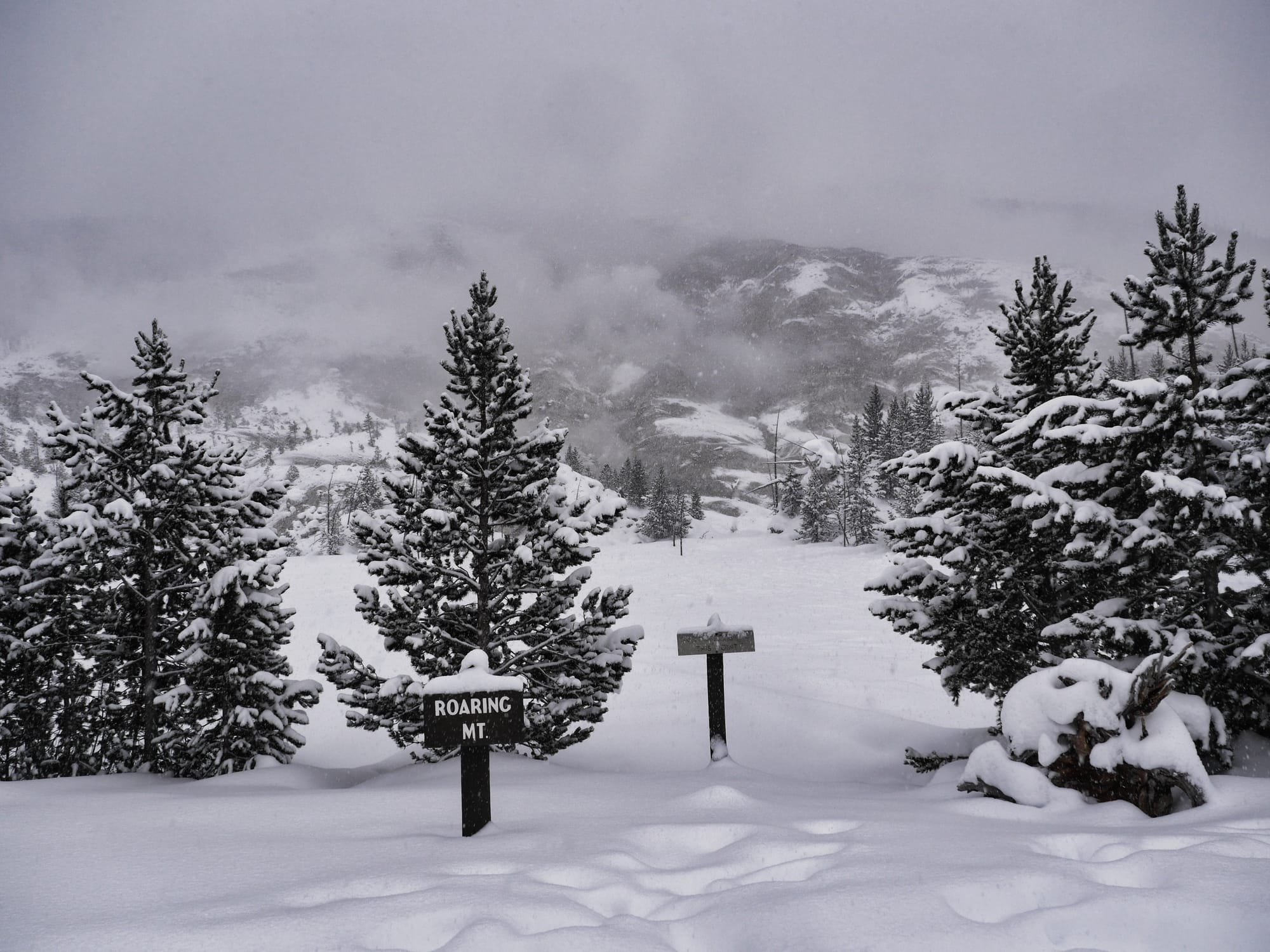
Despite the weather, the scenery was fantastic — a winter wonderland.
The Norris Geyser Basin
The next stop was the Norris Geyser Basin. I was looking forward to visiting Norris on the trip, as it was the first geyser basin I had explored when I came to Yellowstone in the summer of 2010.
In 2010, I stayed in Cody, and early one summer morning, I drove to the park. Thanks to jet lag, I was up before light, and I entered the park before it opened. I drove down past Yellowstone Lake and smelt what Yellowstone had to offer — the smell of rotten eggs, aka sulphur. My first experience of hot springs were some mud volcanoes down the road from the lake. But, it wasn’t until I got to the Norris Geyser Basin that I saw what the park could offer. The basin was a remarkable place, even when visiting with several hundred other people.
On my winter visit to Norris, I was there with ten people. Fantastic!
The place had an eerie, almost otherworldly silence with so few people. All I could hear was the bubbling and burping of mud, the splash of the springs and the crunch of snow beneath my feet. It was magical.
My photos don’t do the basin justice, thanks to the cloud, the flat grey light and the light snow.
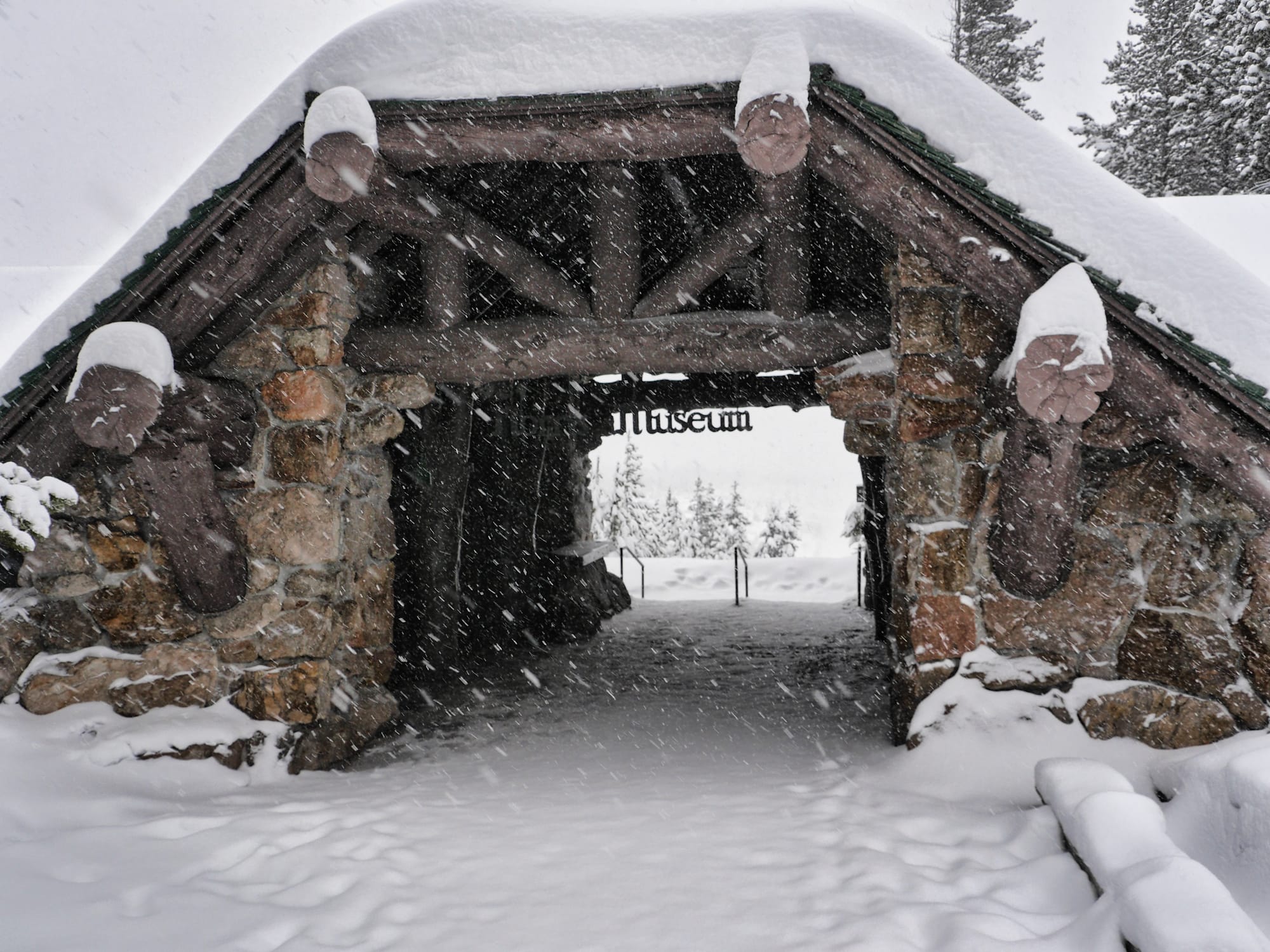

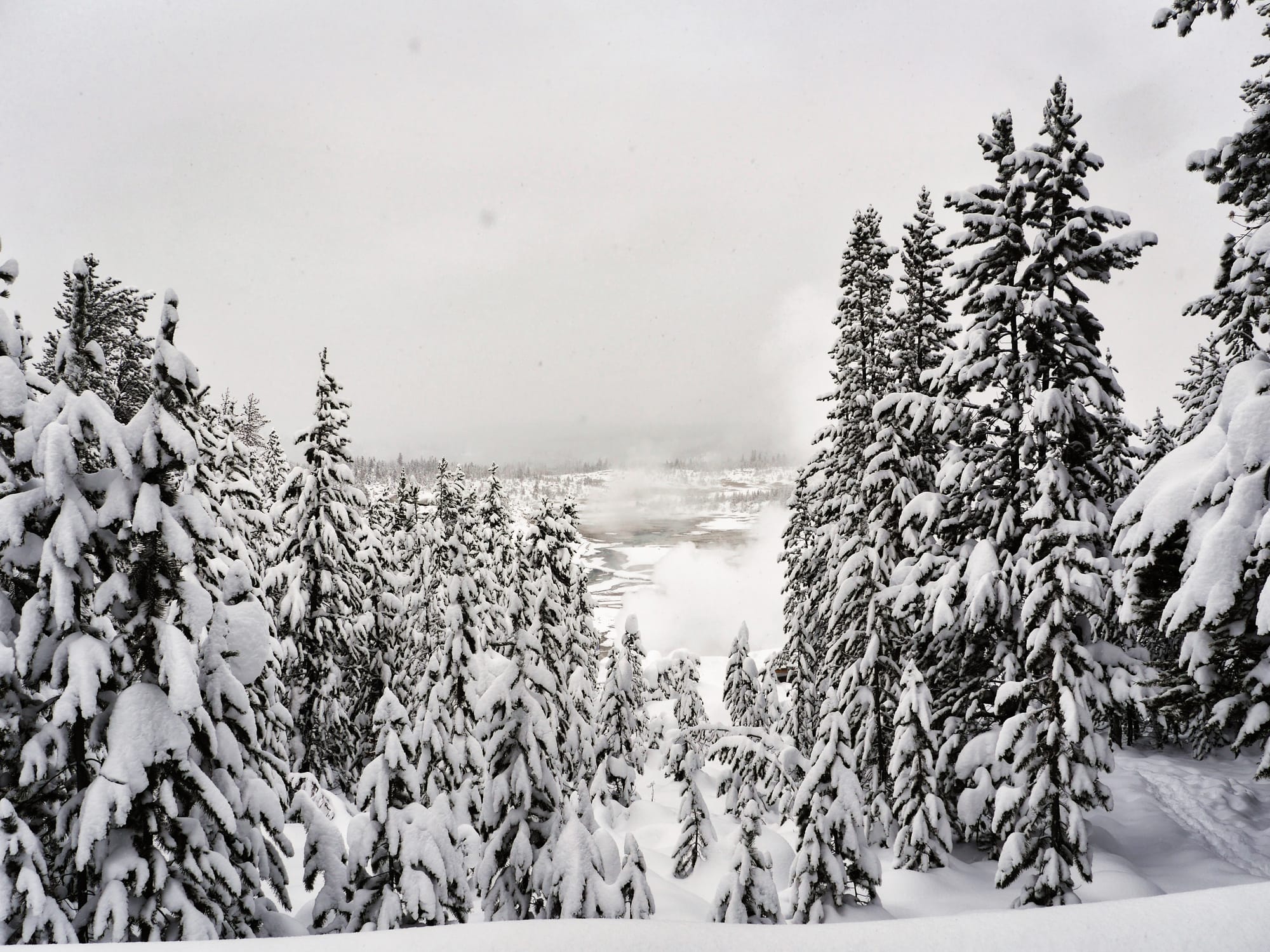
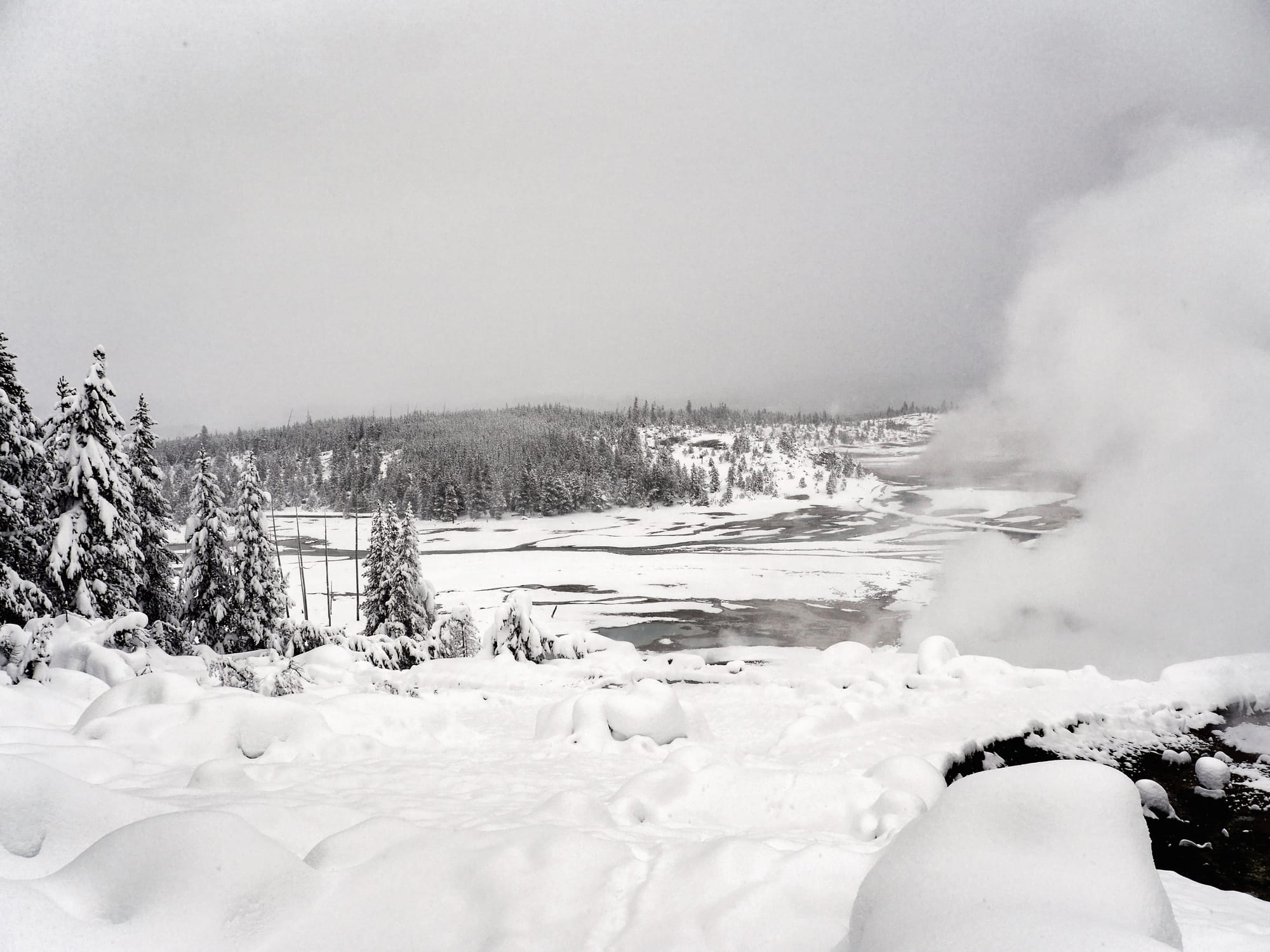
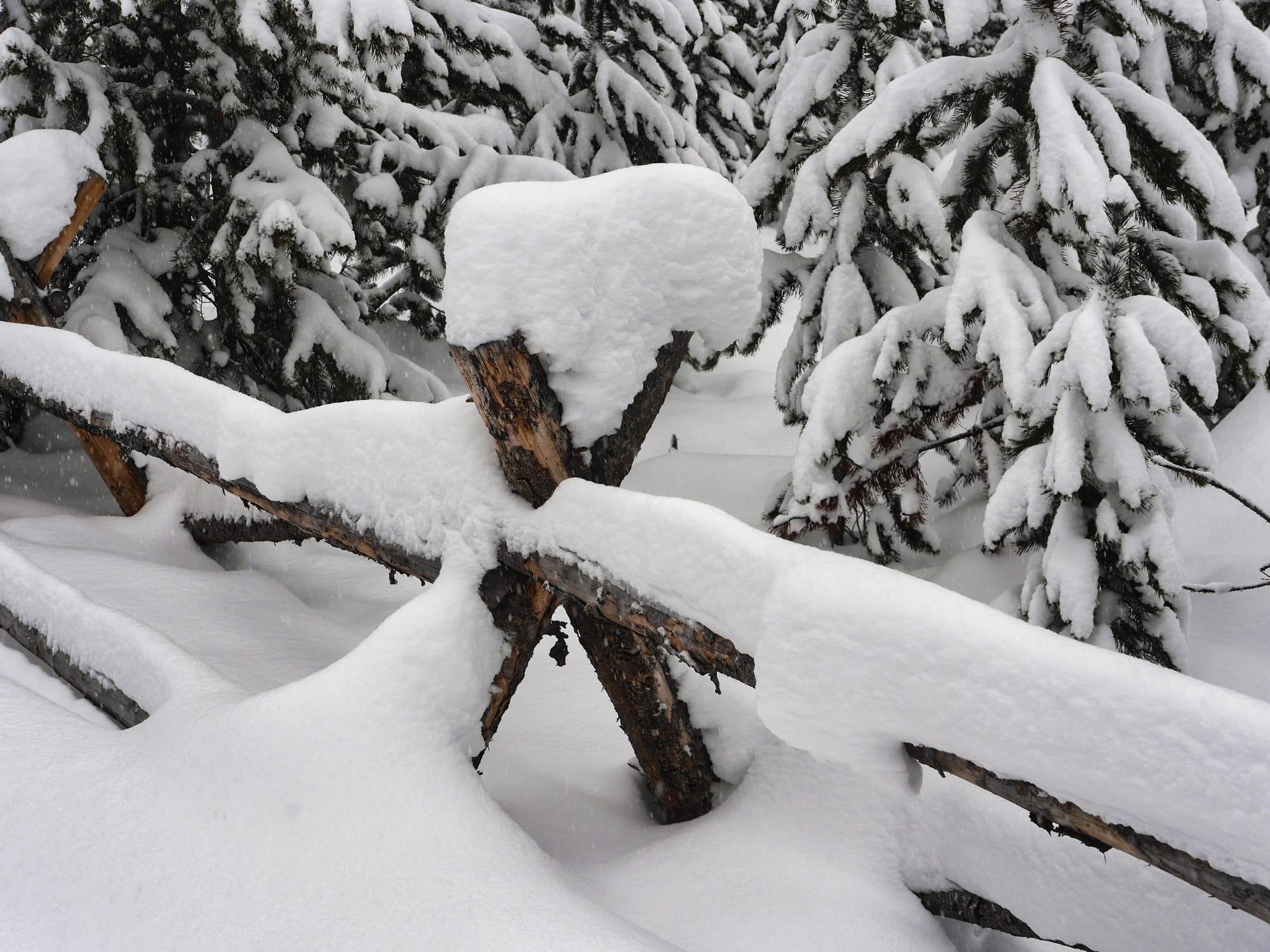
Yes, they had received a lot of snow. I would estimate a good foot to 18 inches (ca. 46 cm) below my feet.
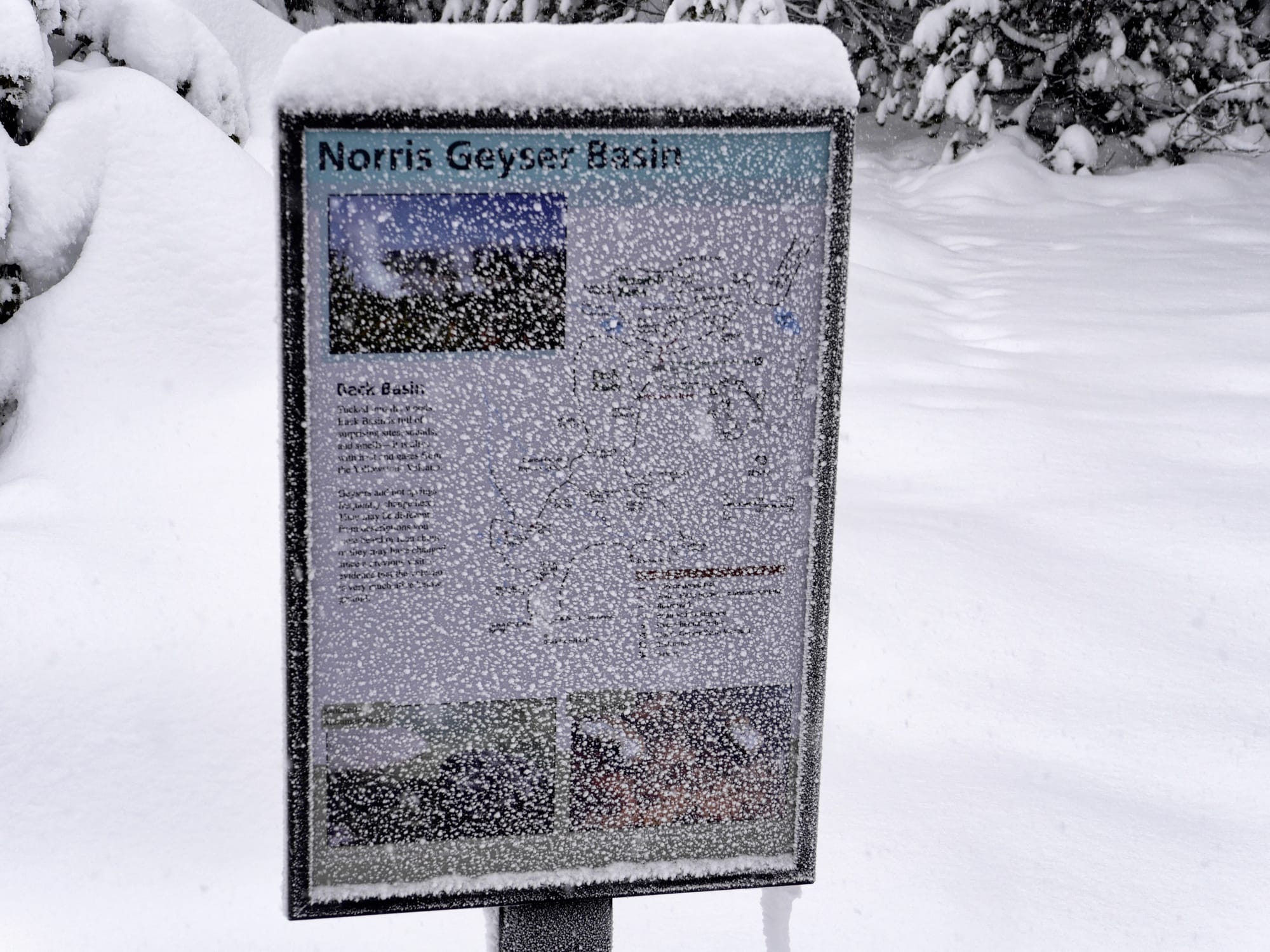
Sadly, we did not go down into the main lower basin area but took the path off to the left into the upper basin.
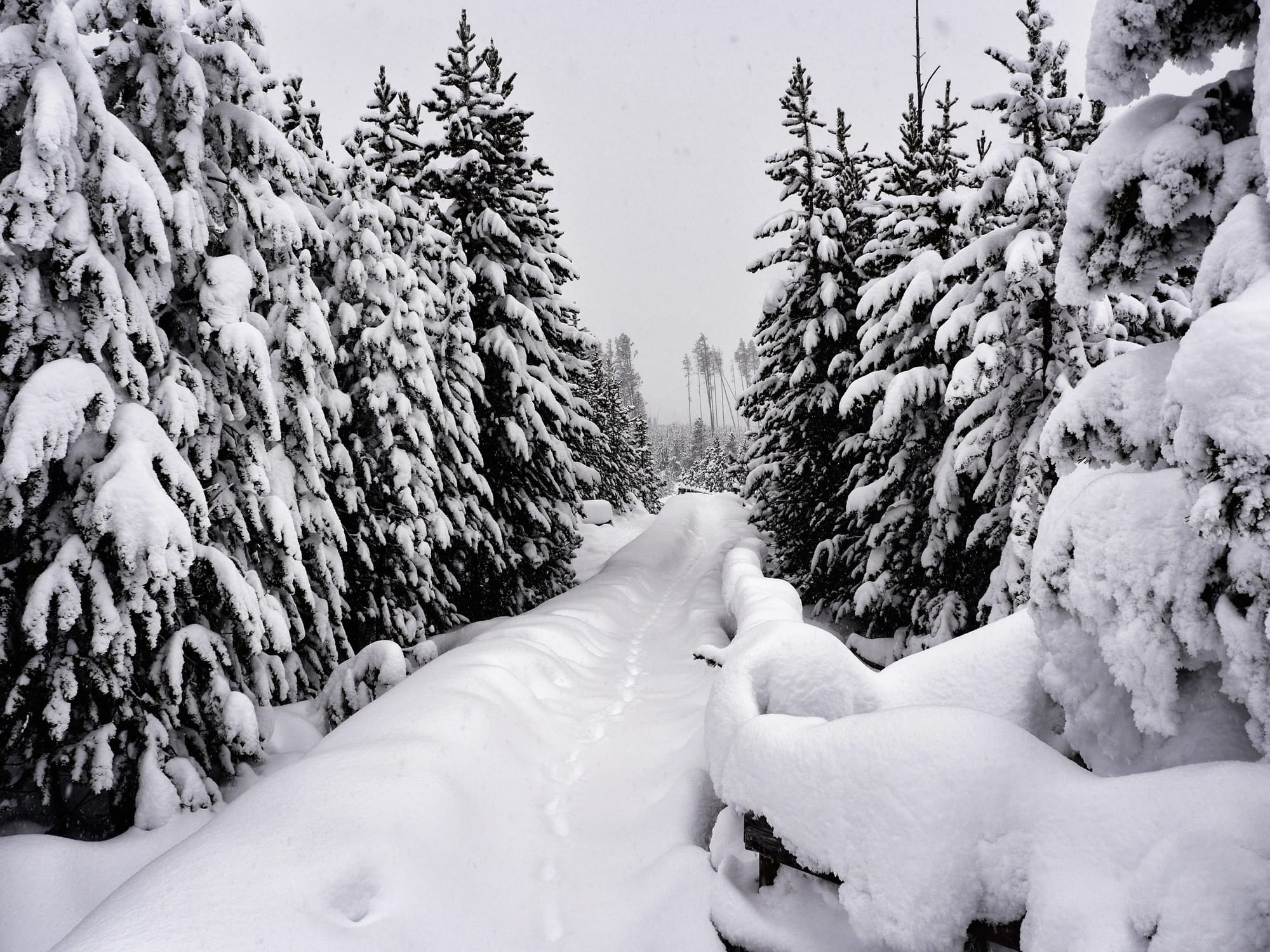
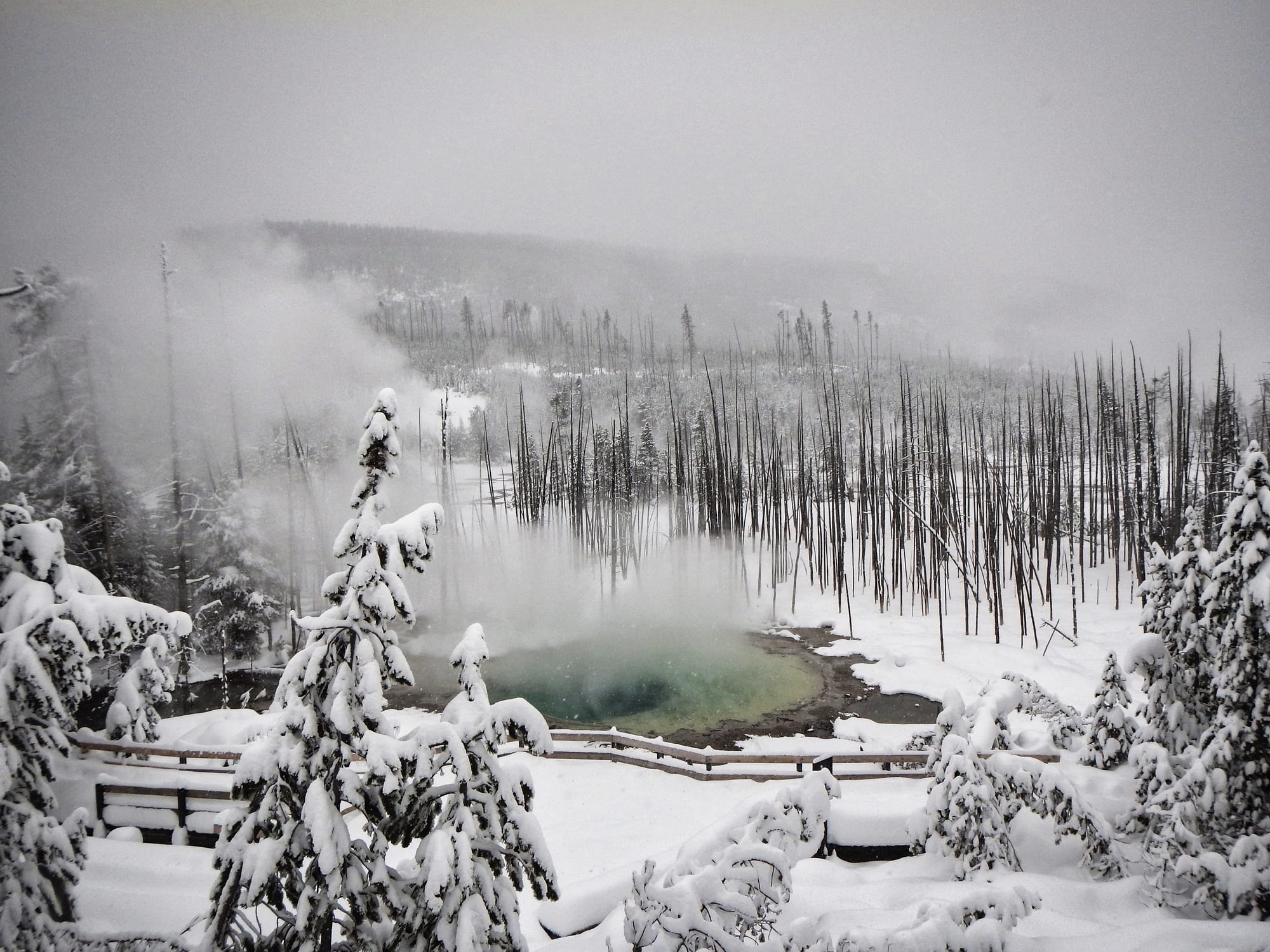
The hot steam pools were amazing in the snow.
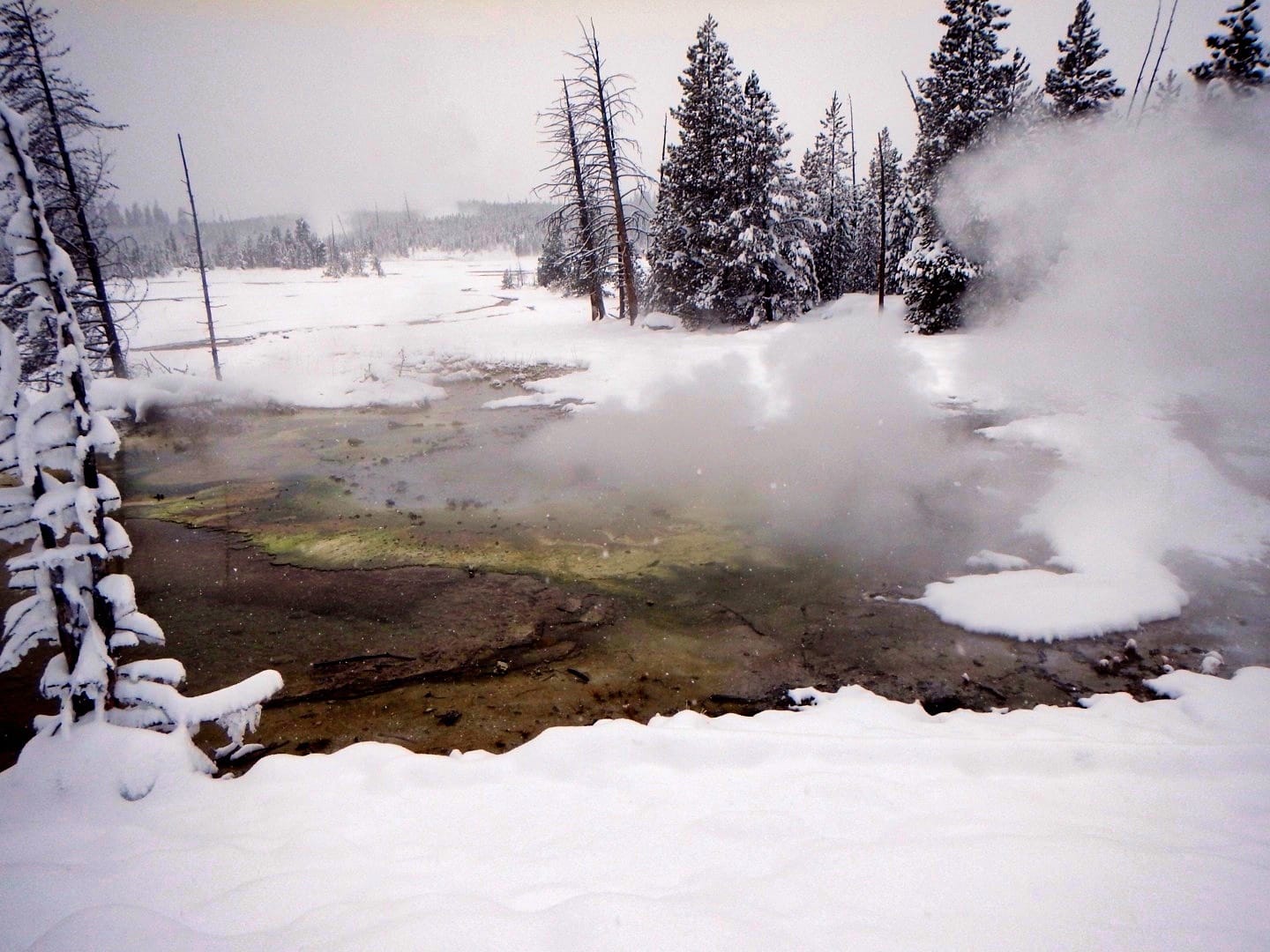
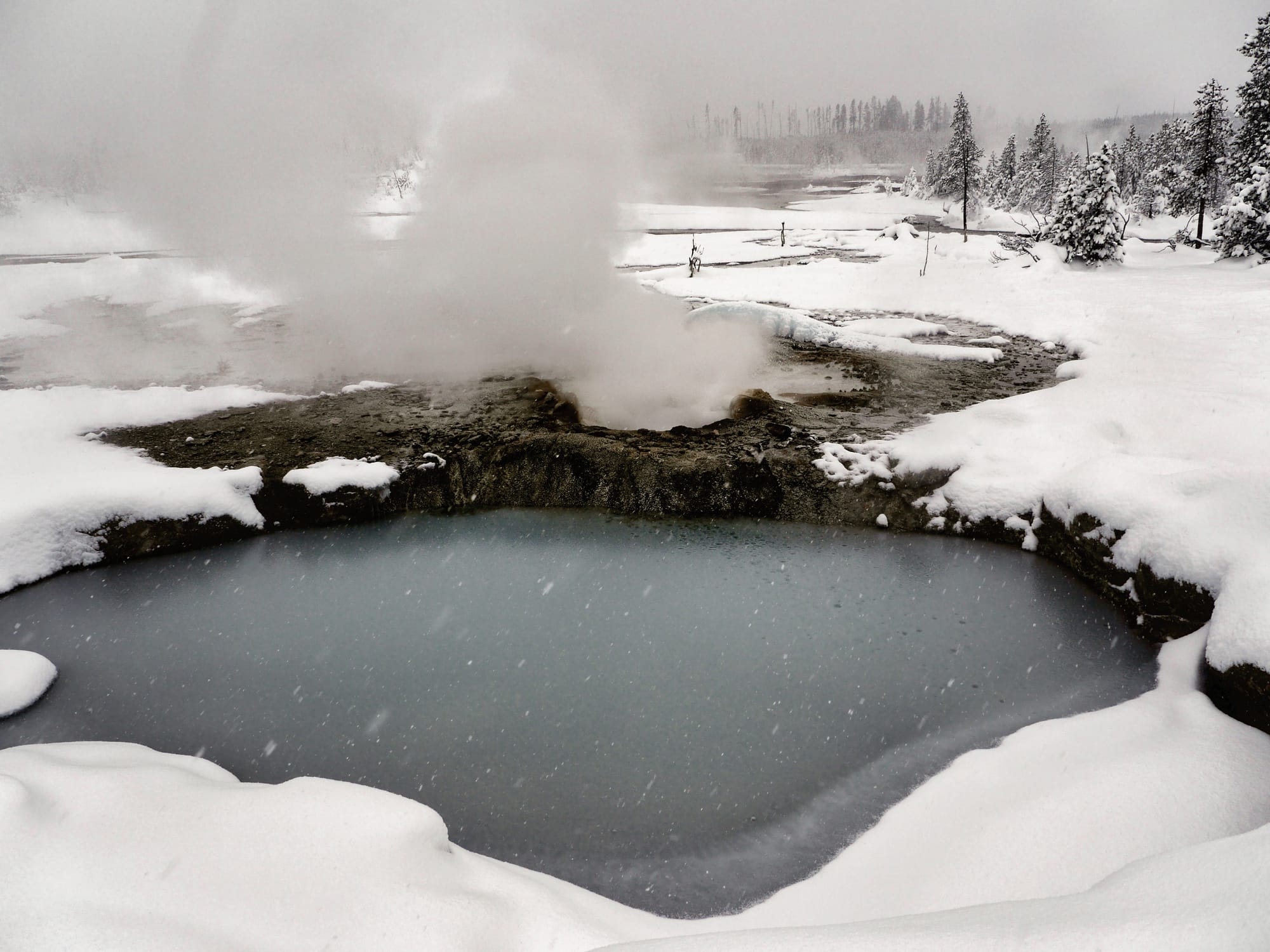
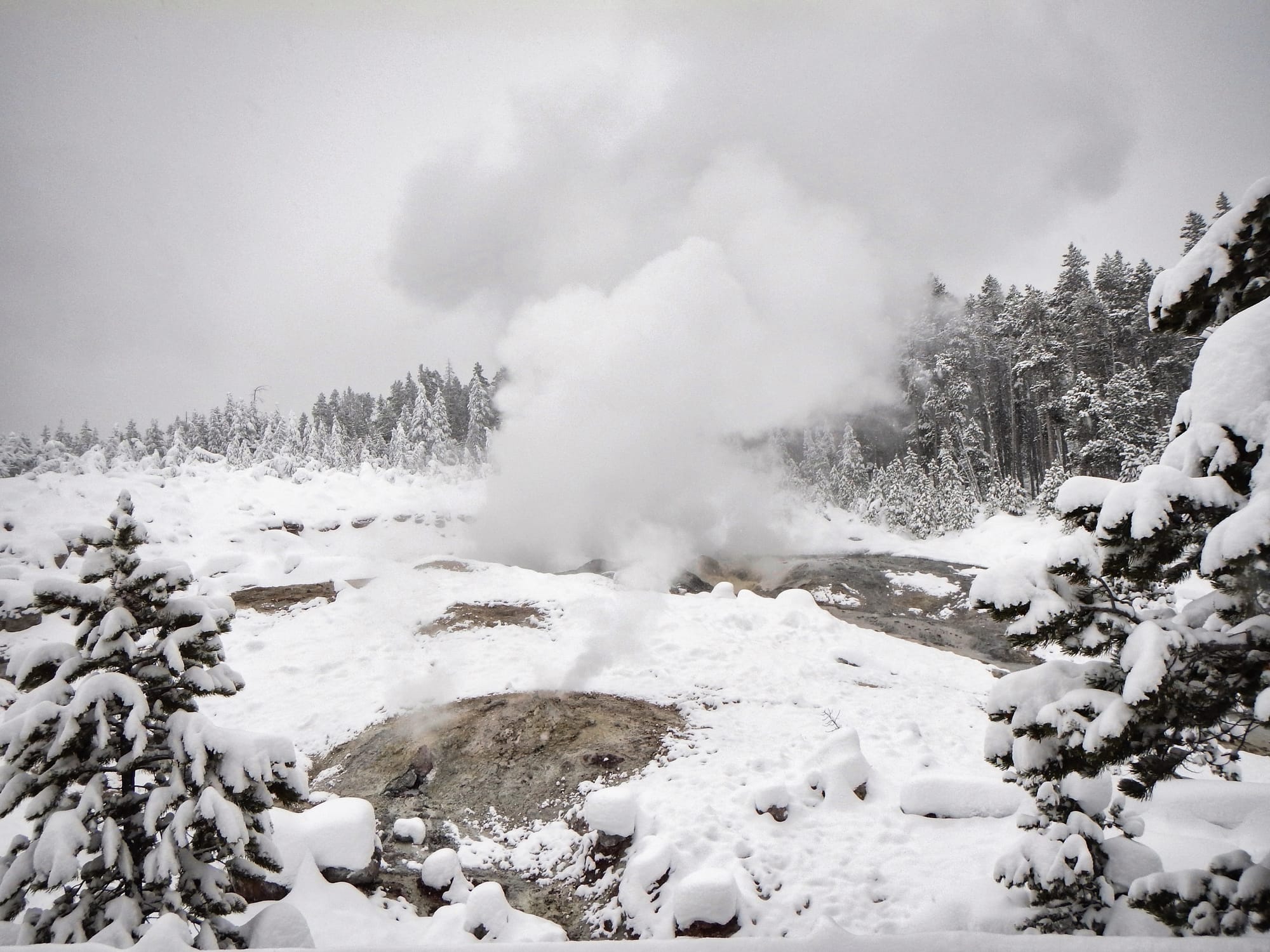
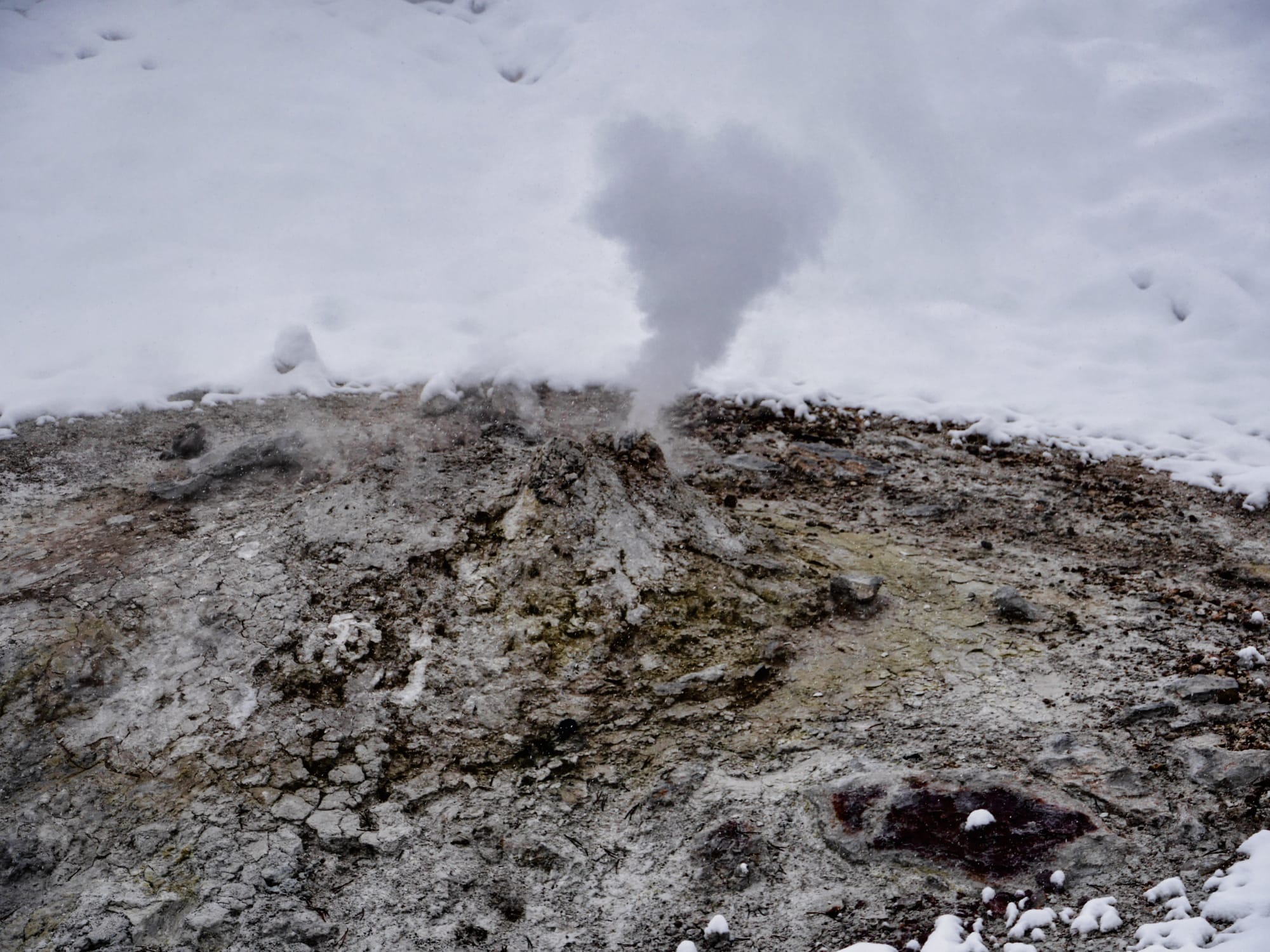
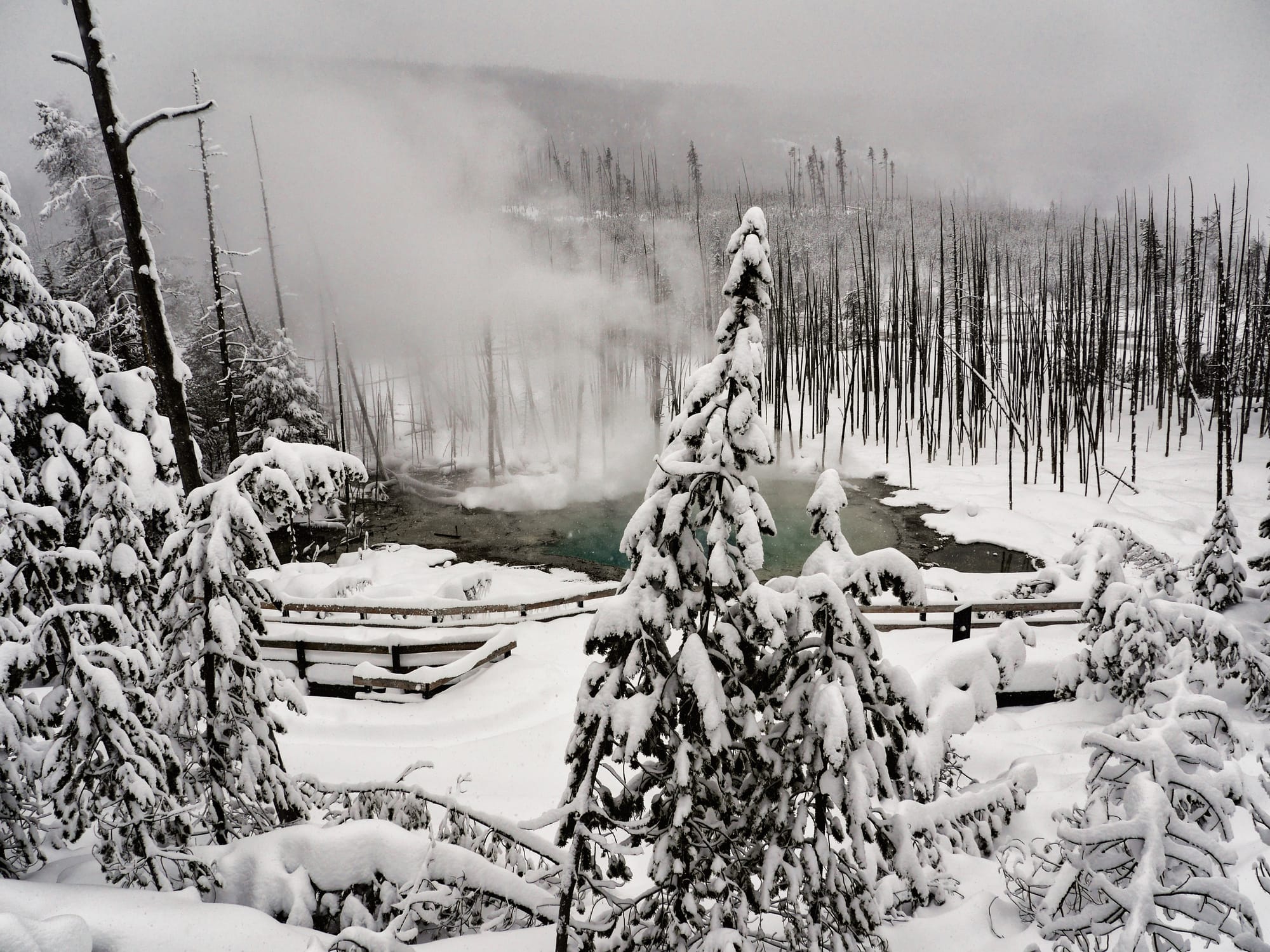
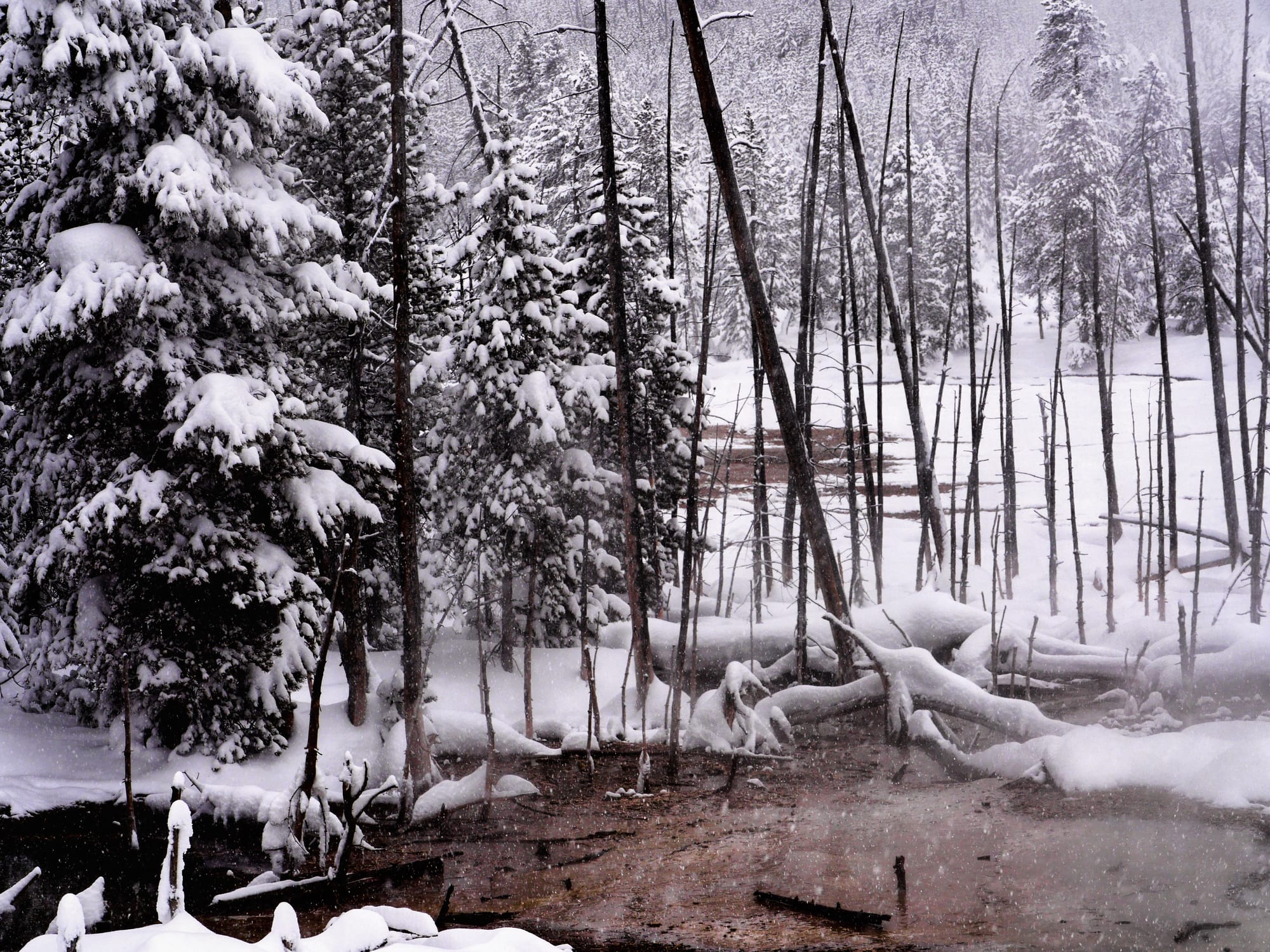
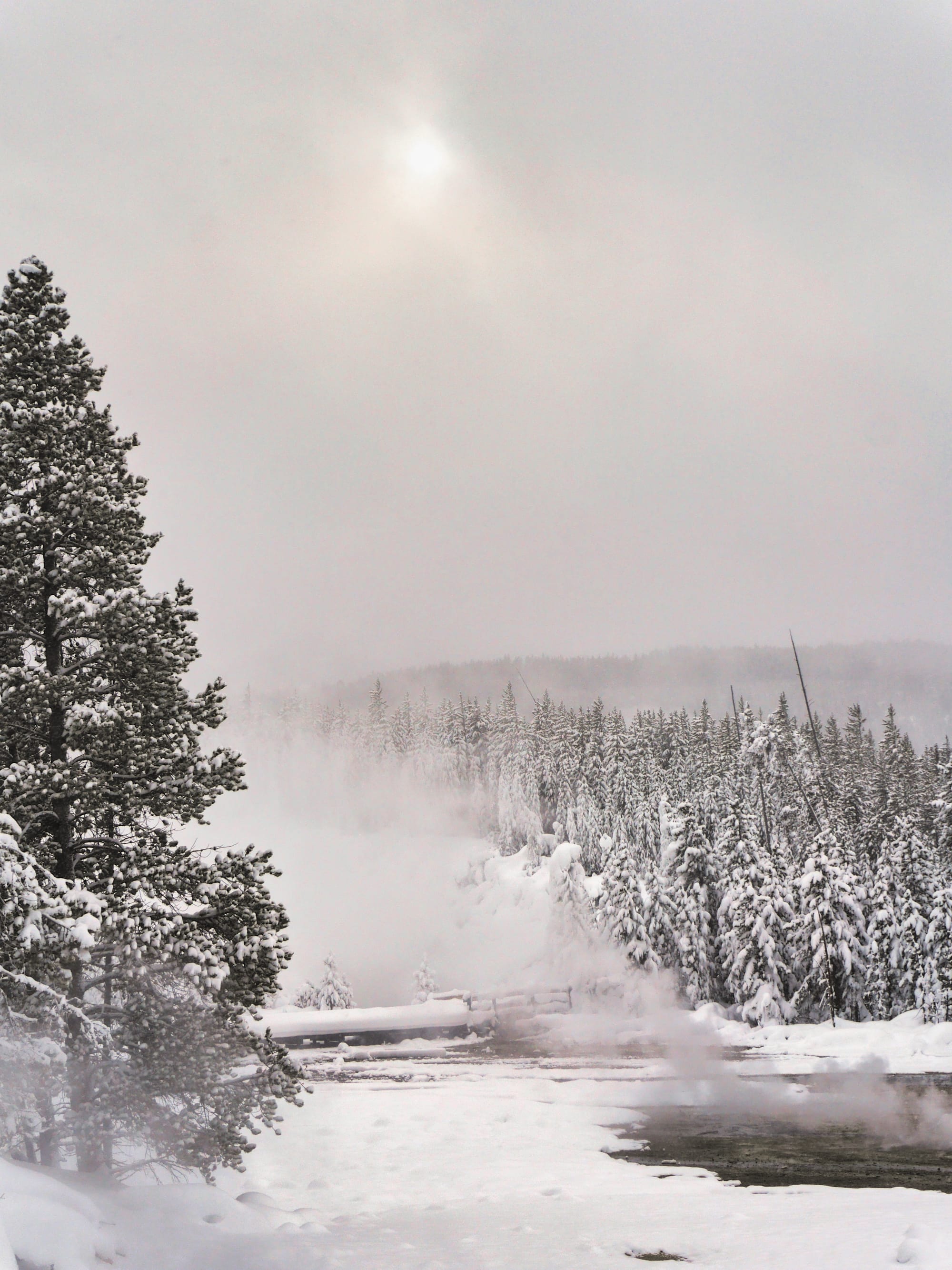
With all this steam, the trees had become encrusted with ice. How do they survive?
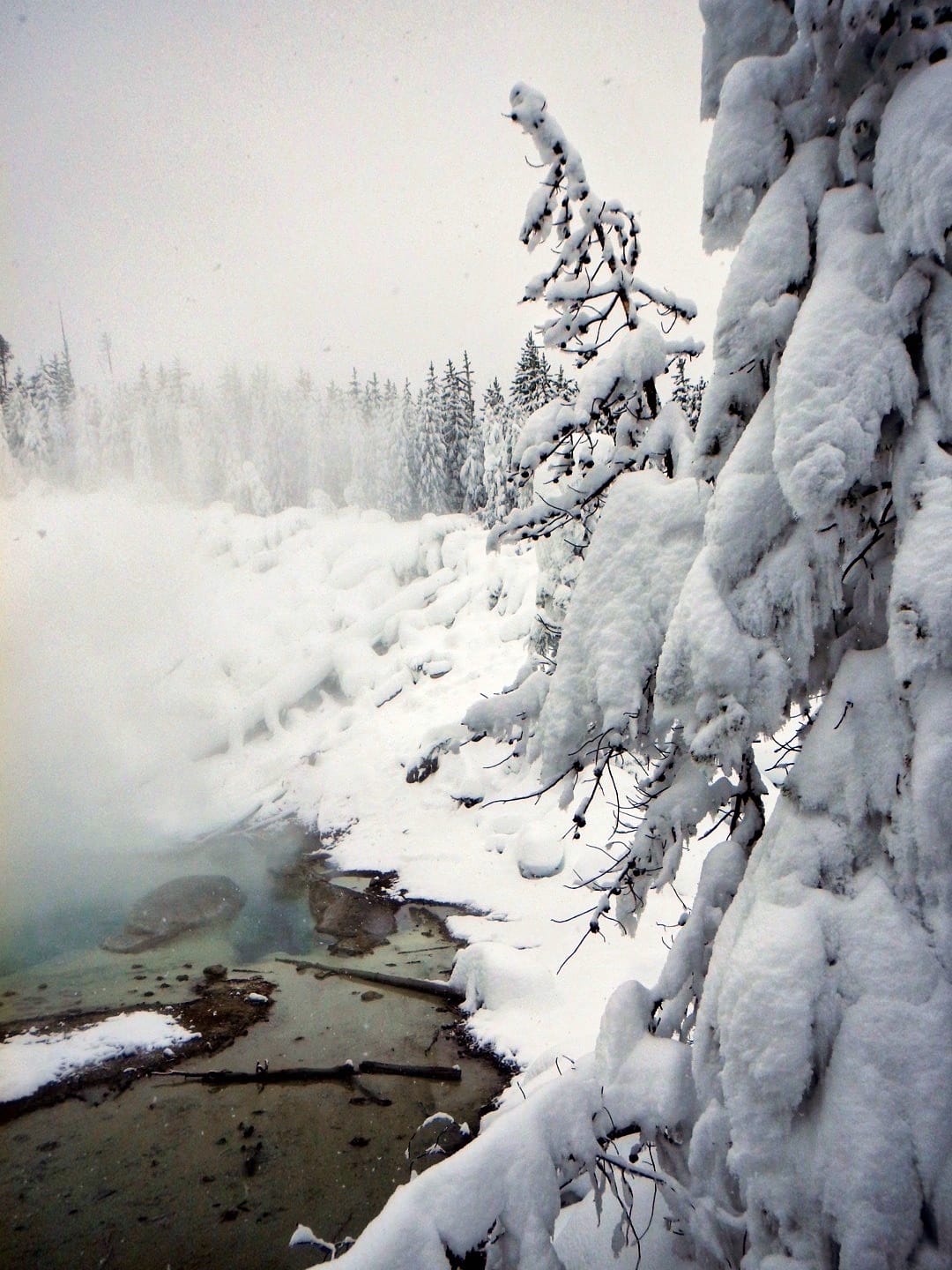
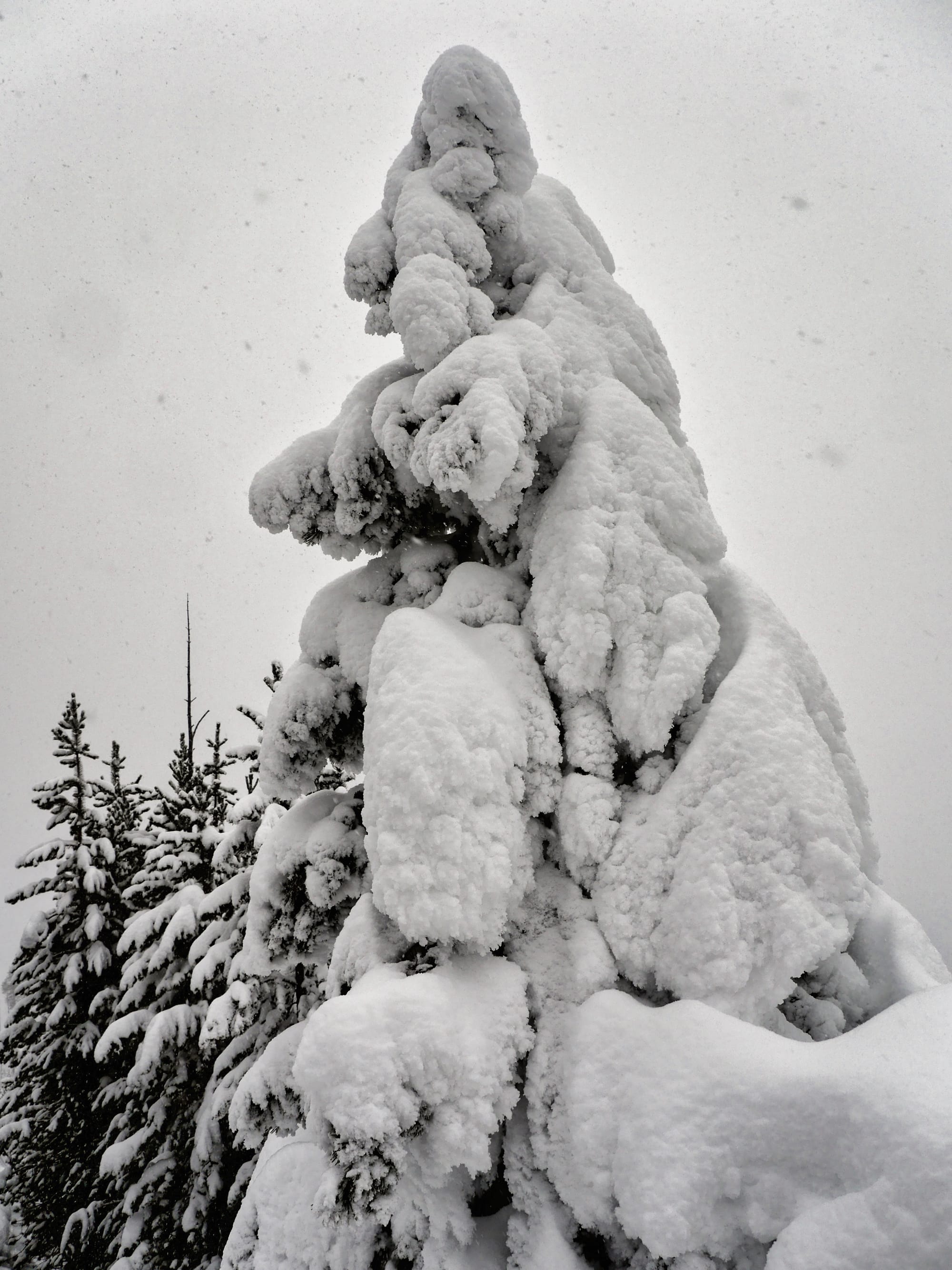
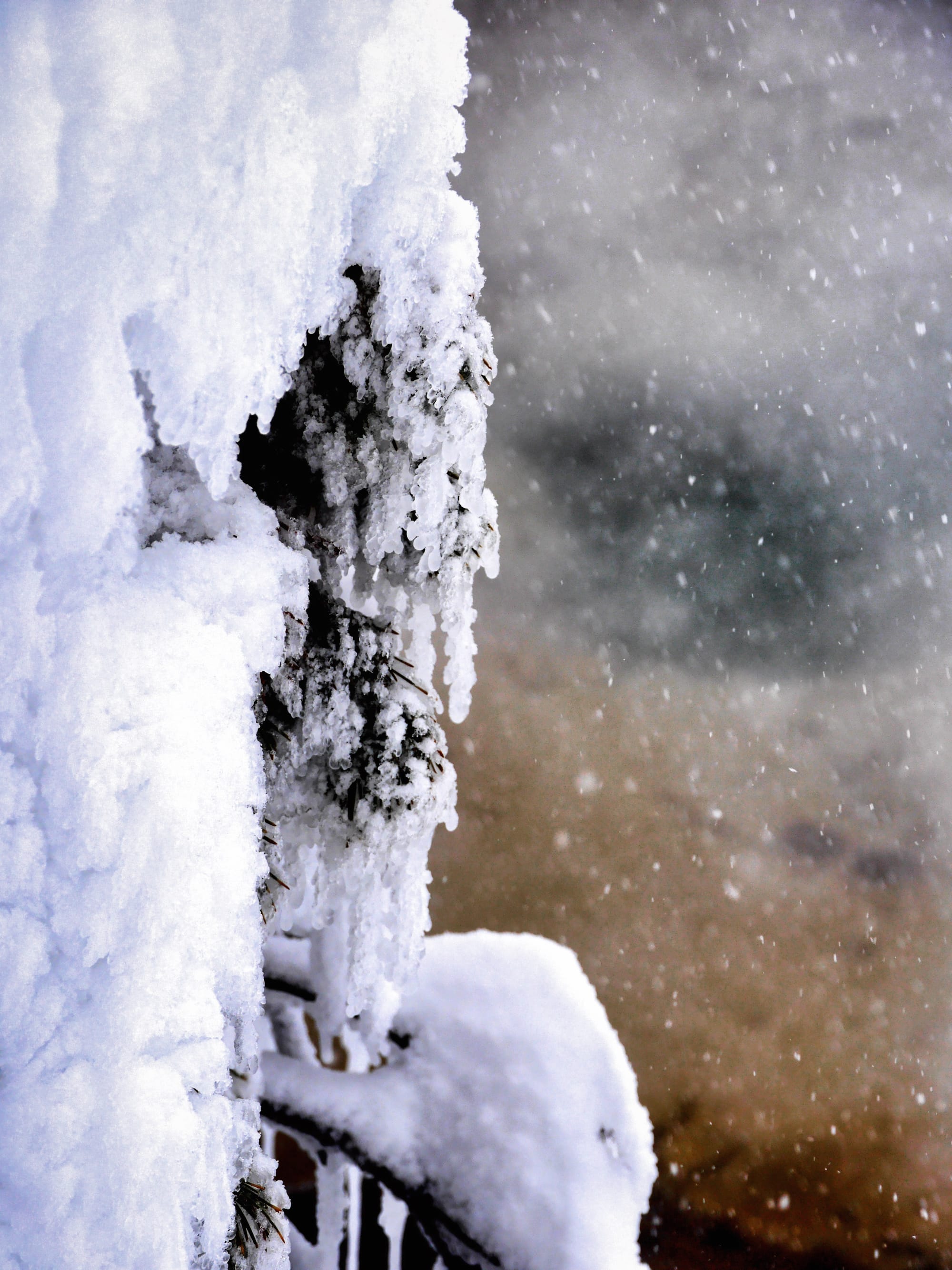
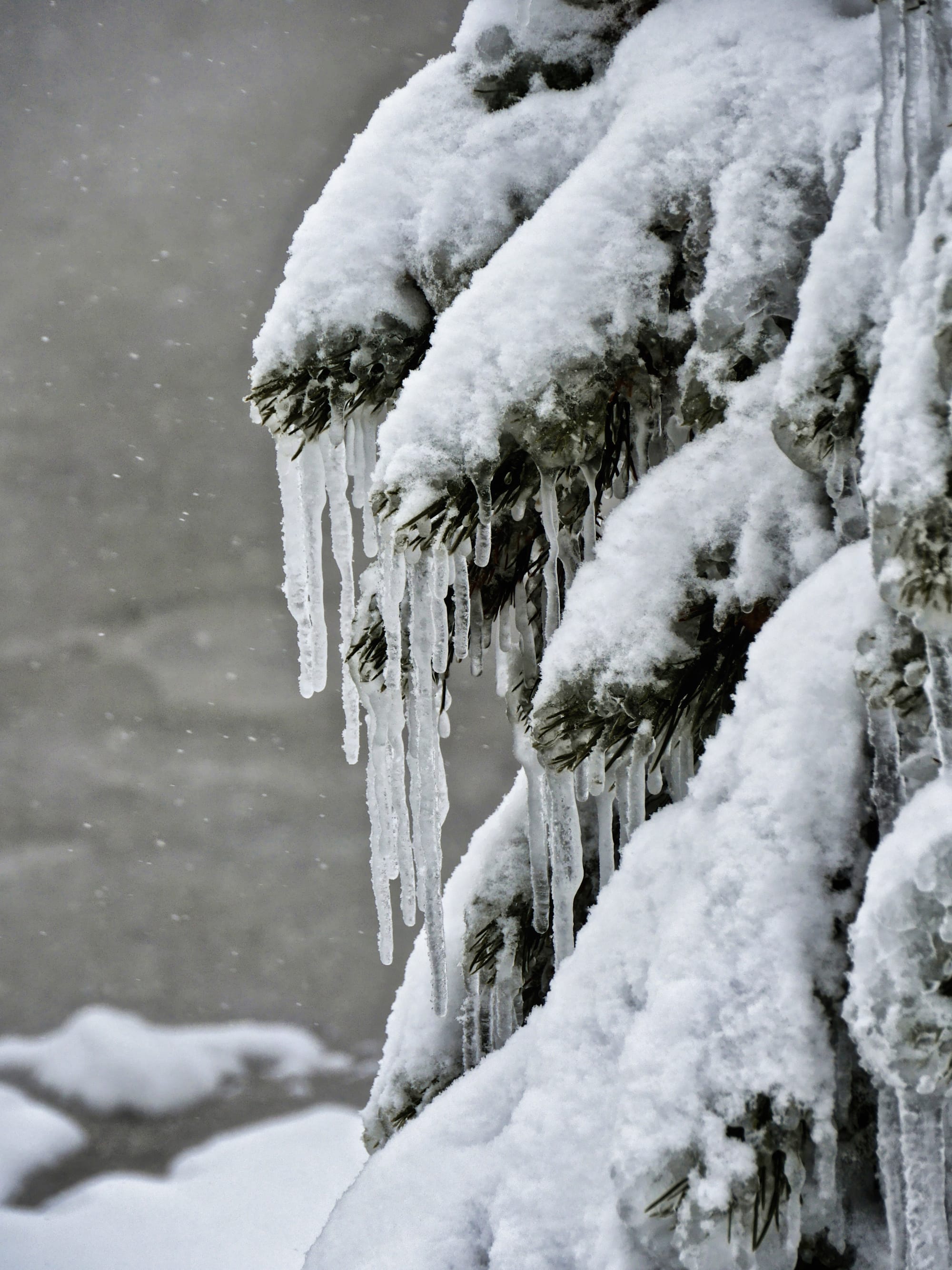
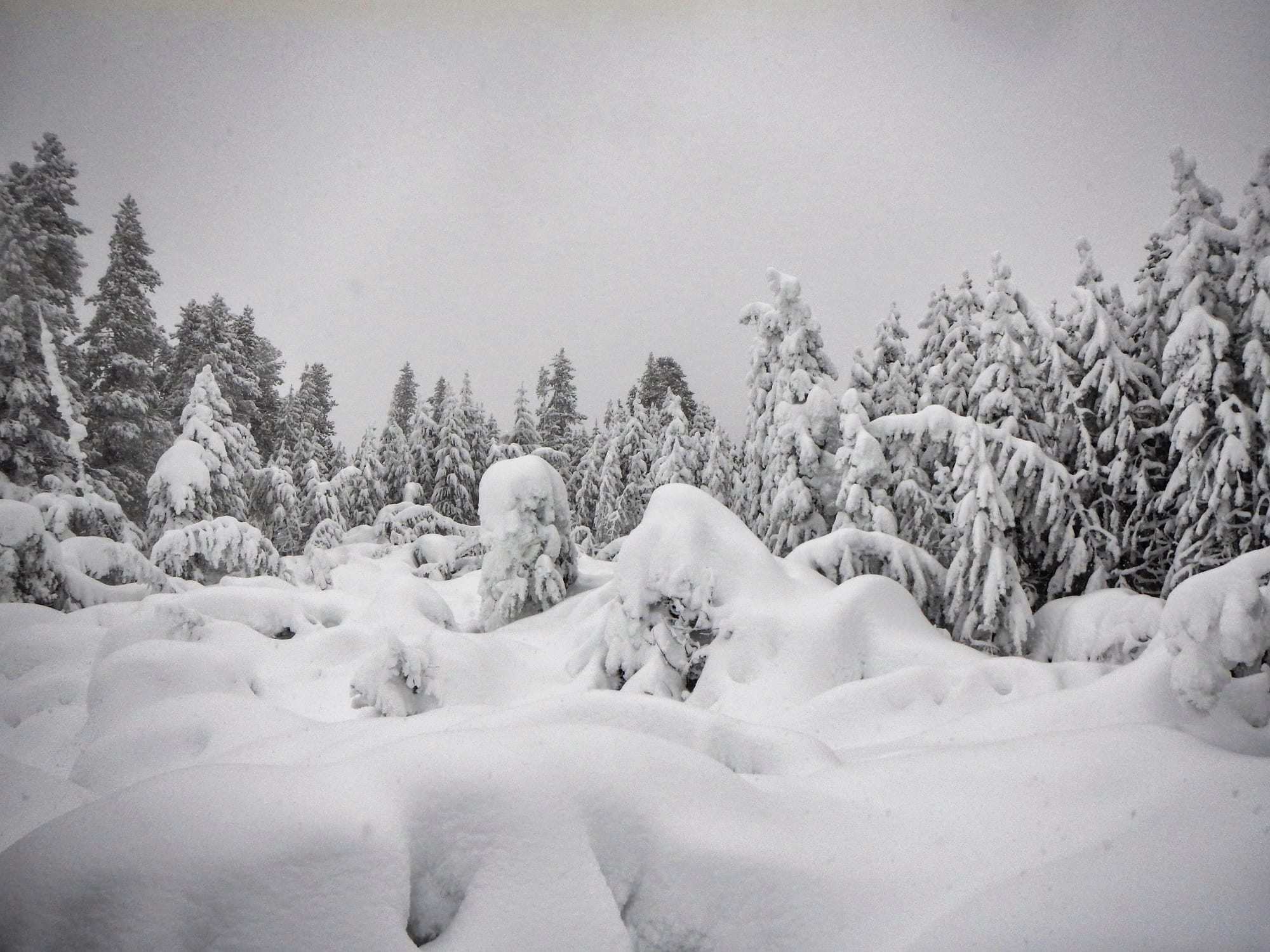
In some areas of the basin, the trees become so heavy with the ice that they finally bend over and become ‘ghost trees’. If they don’t snap, they will recover in the thaw. The mounds in the above photo are ghost trees.
One of the other remarkable things to see at Norris were the thermophilic (heat-loving) organisms. One of them, which forms the most amazing mats, is Zygogonium, a dark alga on the surface but bright green beneath. It thrives in water at pH 2-3 and temperatures of 20-40 °C (70-100 ºF).
Elk in the river
We didn’t see much wildlife.
The only large animal we saw was an Elk standing in the river.
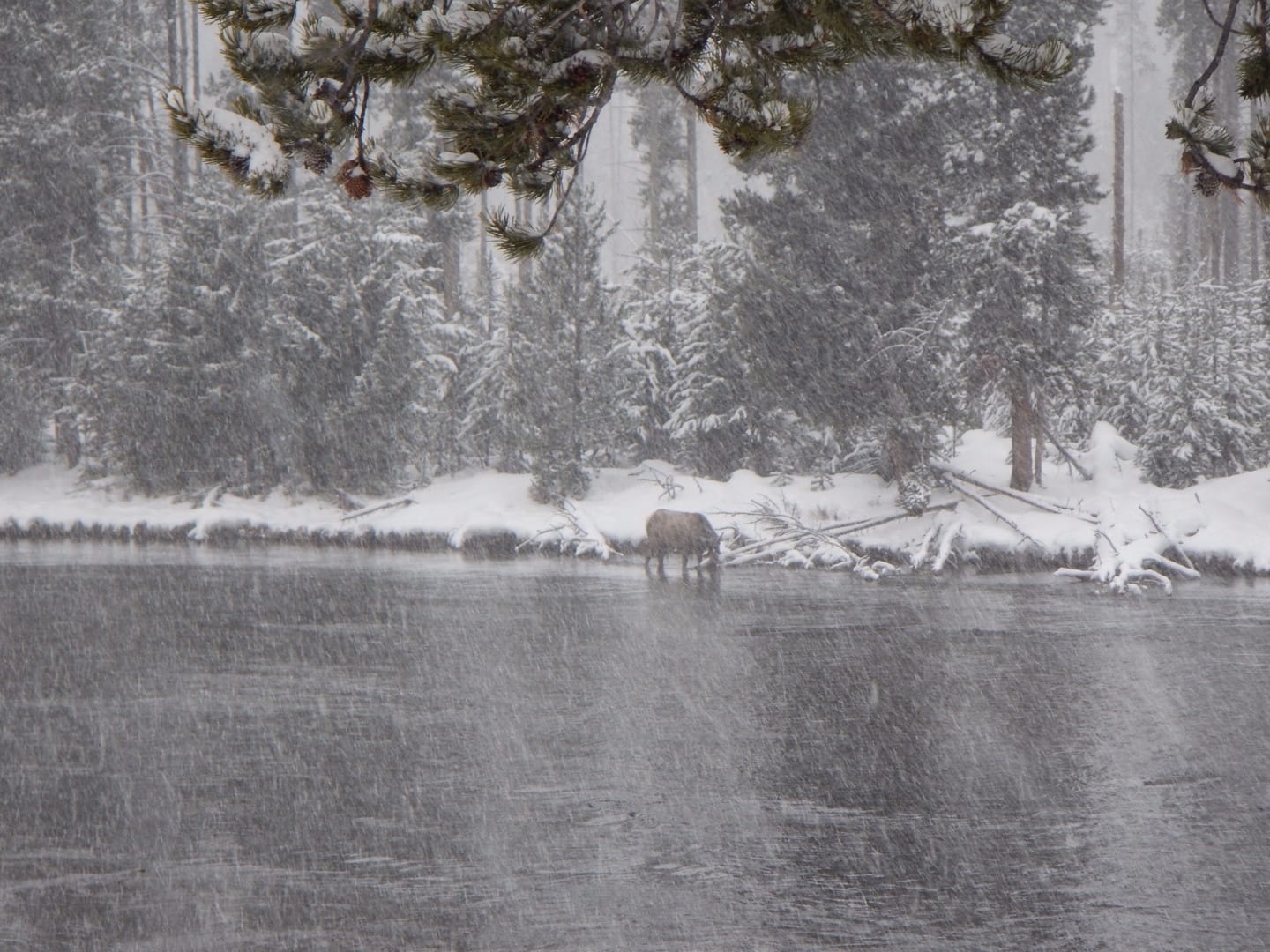
And yes, it was snowing hard.
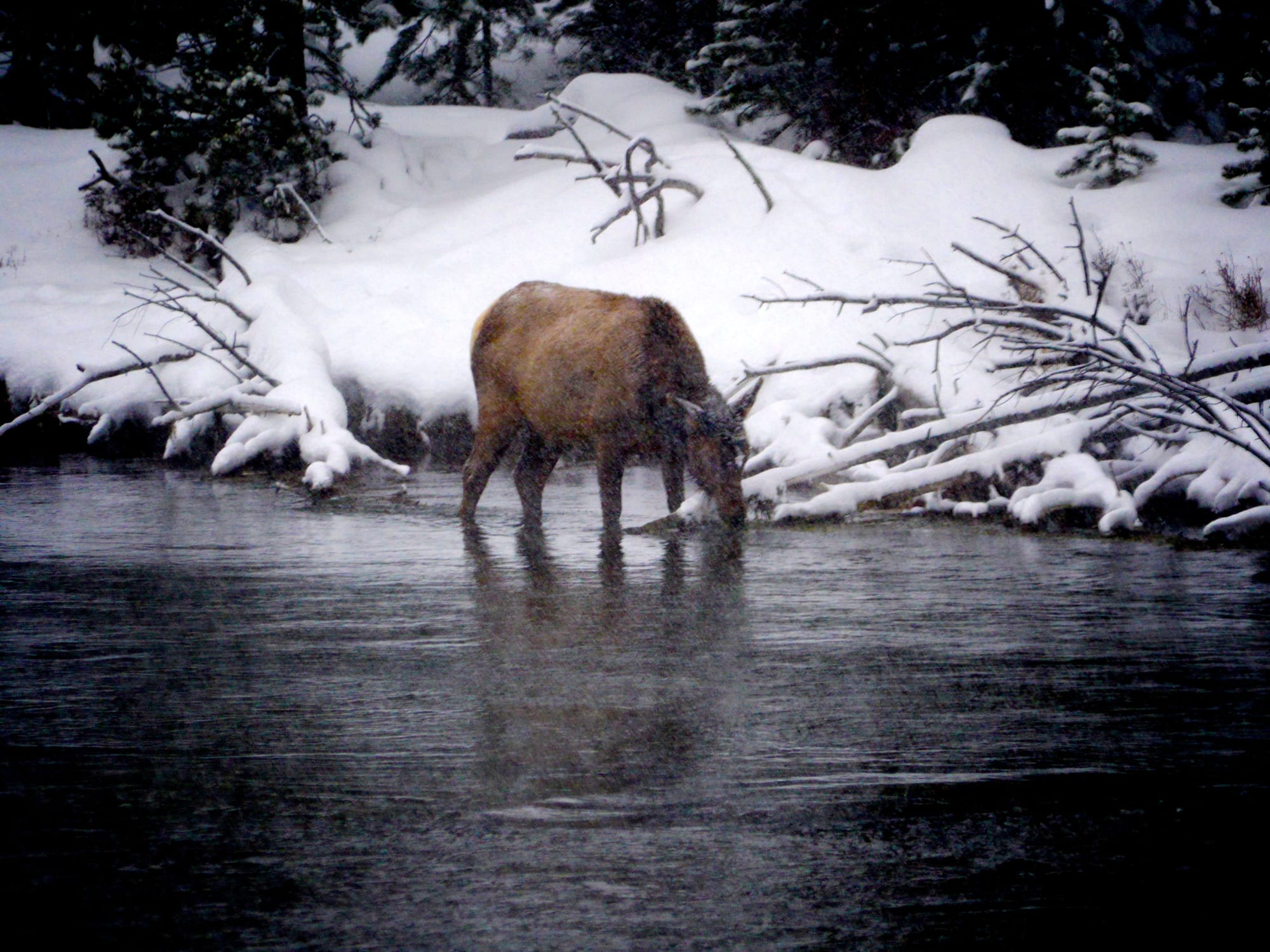
Warming Huts — Yellowstone National Park
Yellowstone has a number of warming huts dotted around the park, and they provide a welcome break from the cold.
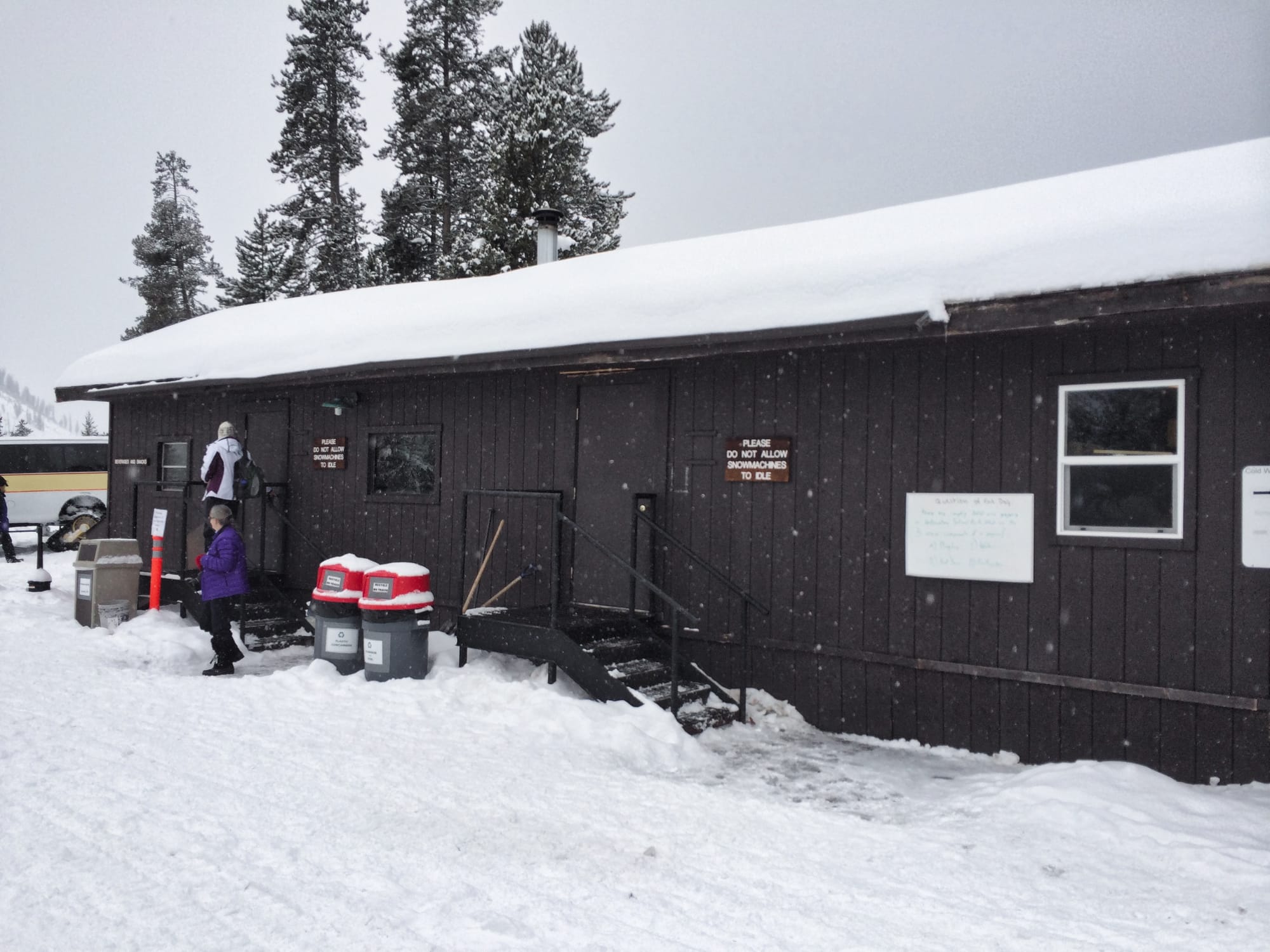
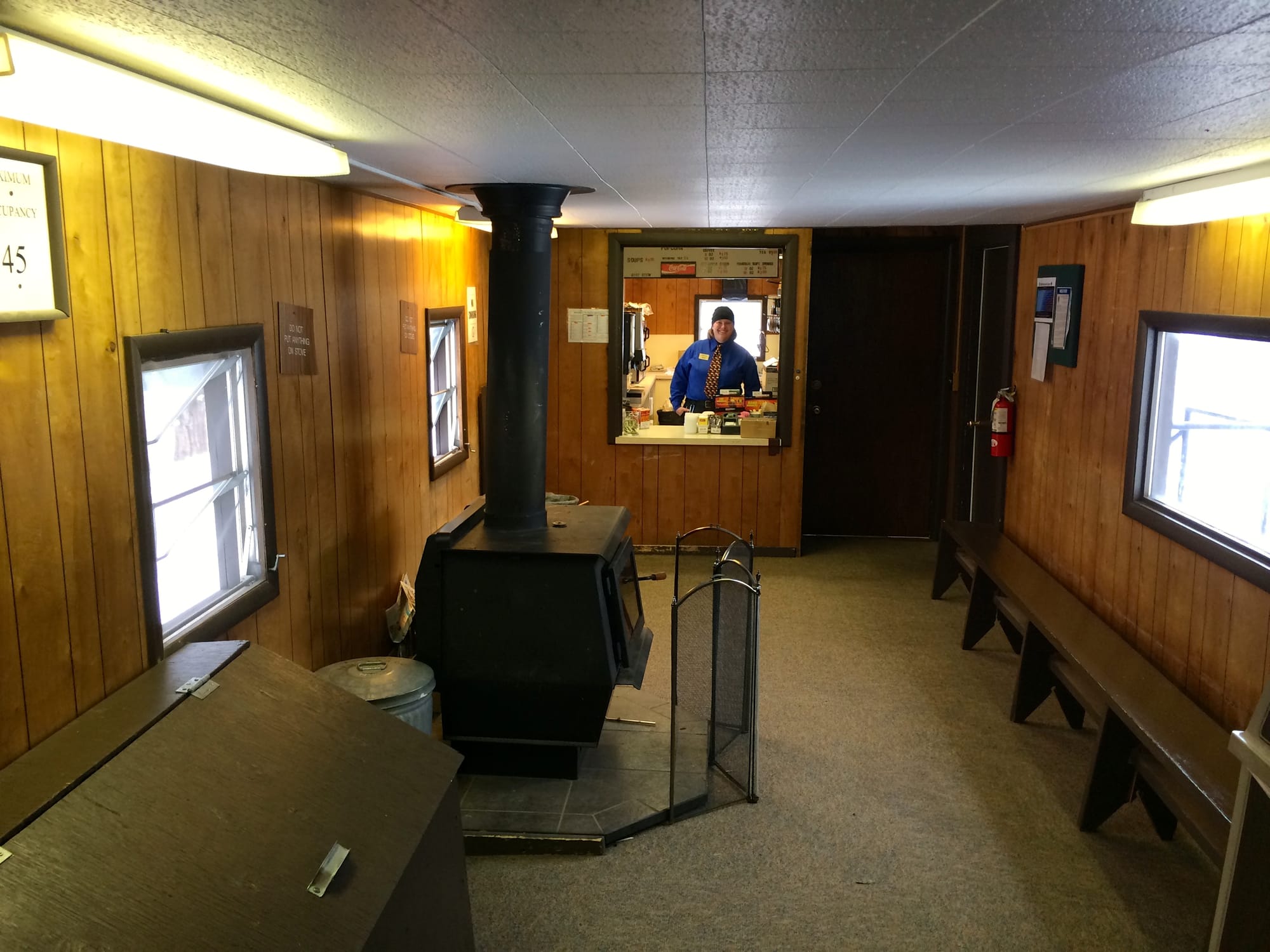
The huts were manned by staff who snowmobiled in and out of the park every day. And depending on the hut, they may have snacks on sale.
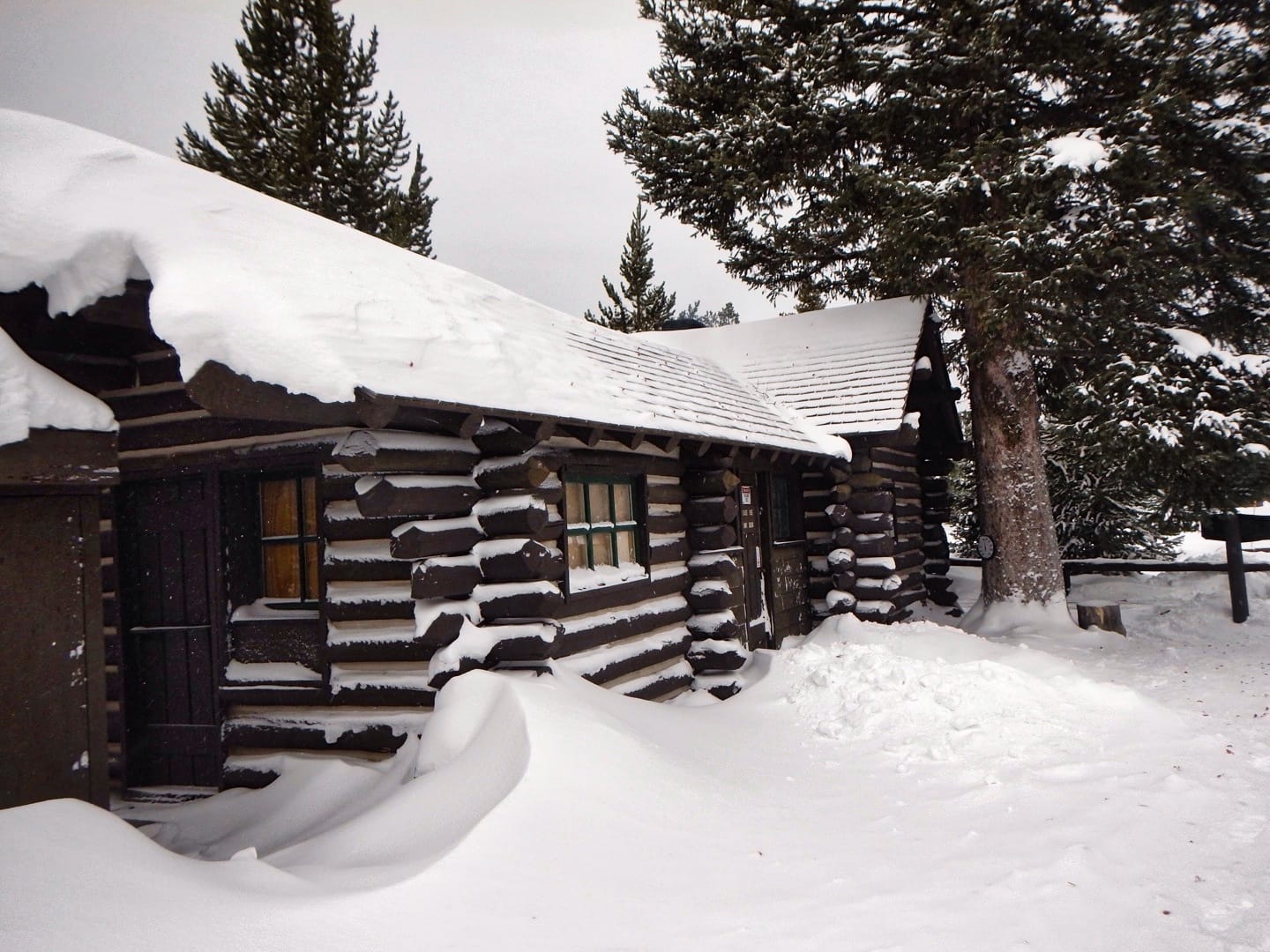
The huts were also an excellent place to meet other travellers and park rangers. The rangers and travellers were a good source of information for road conditions and the latest wildlife sightings.
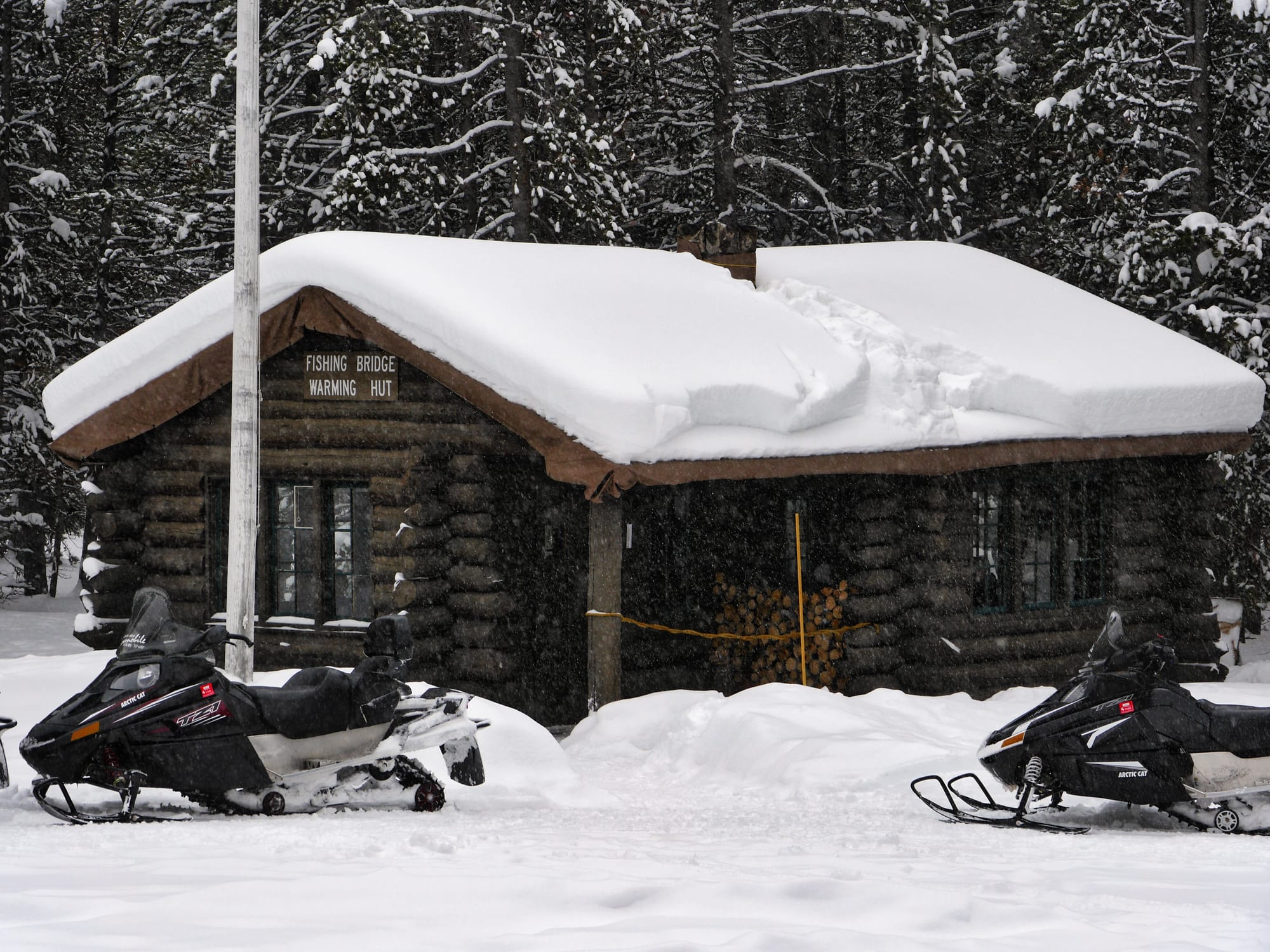
Wild River
We stopped to look at the Wild River on our way to the Fountain Paint Pots. Again, incredible views and the photos do not show the views at their best.
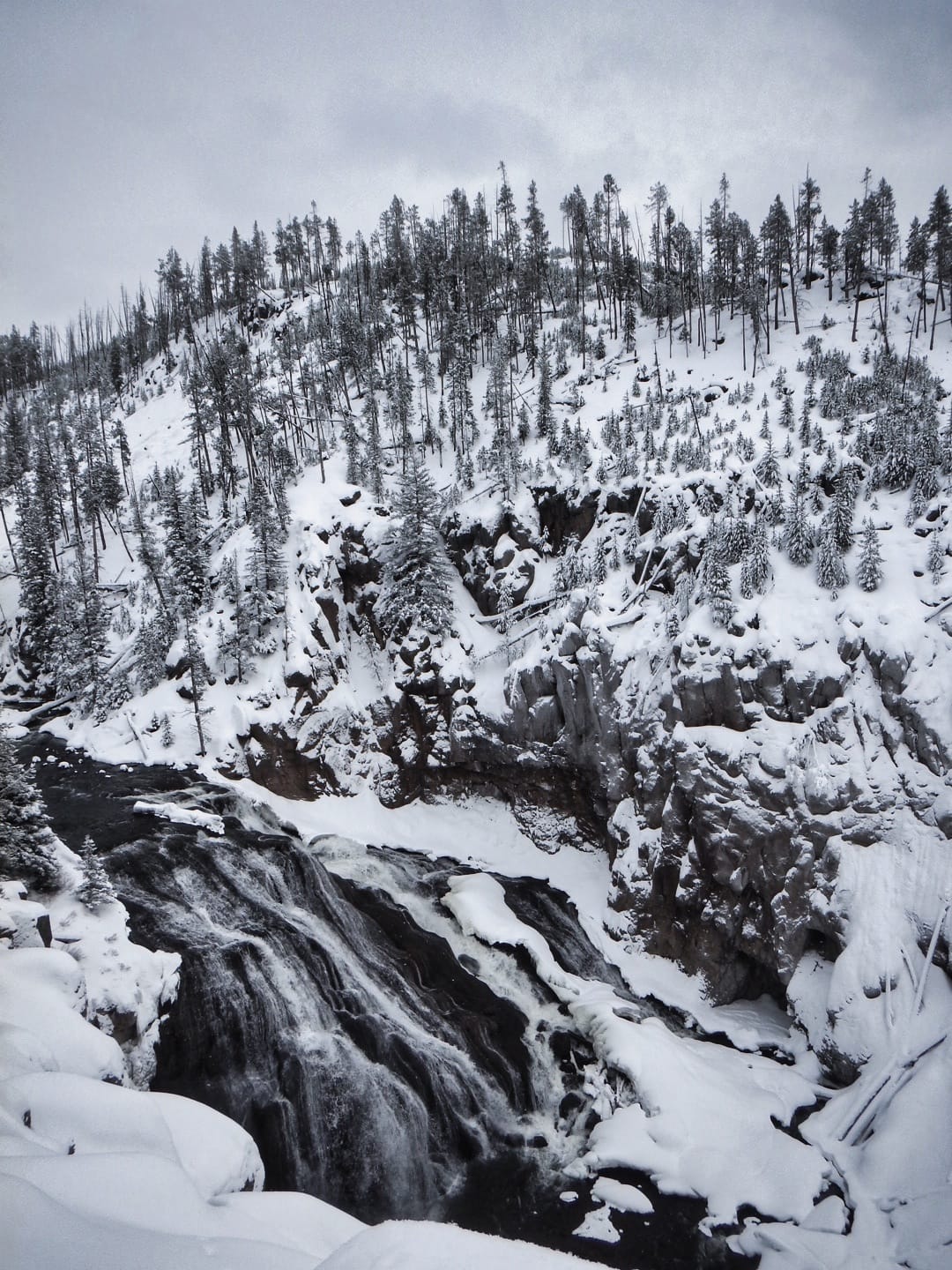
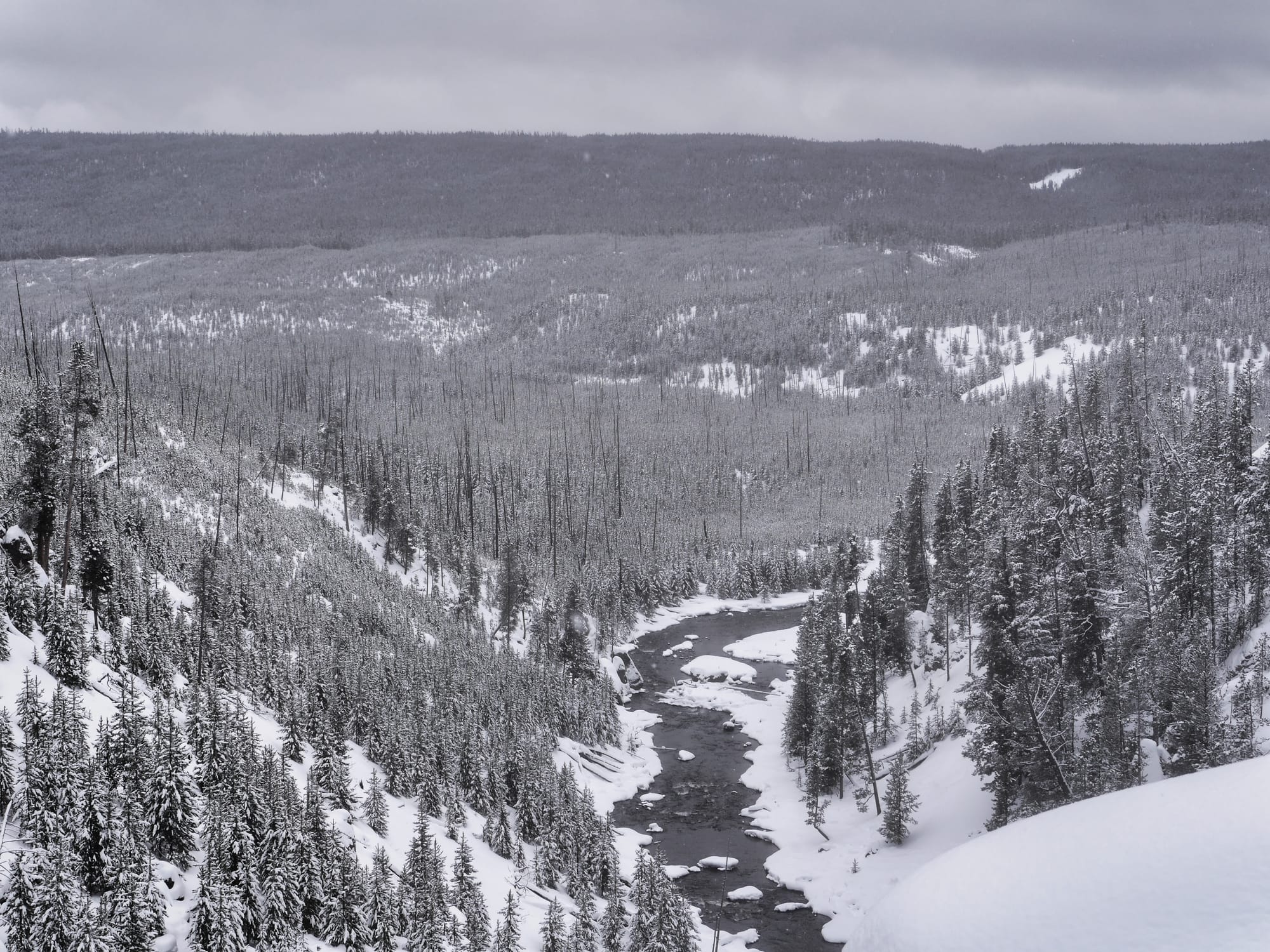
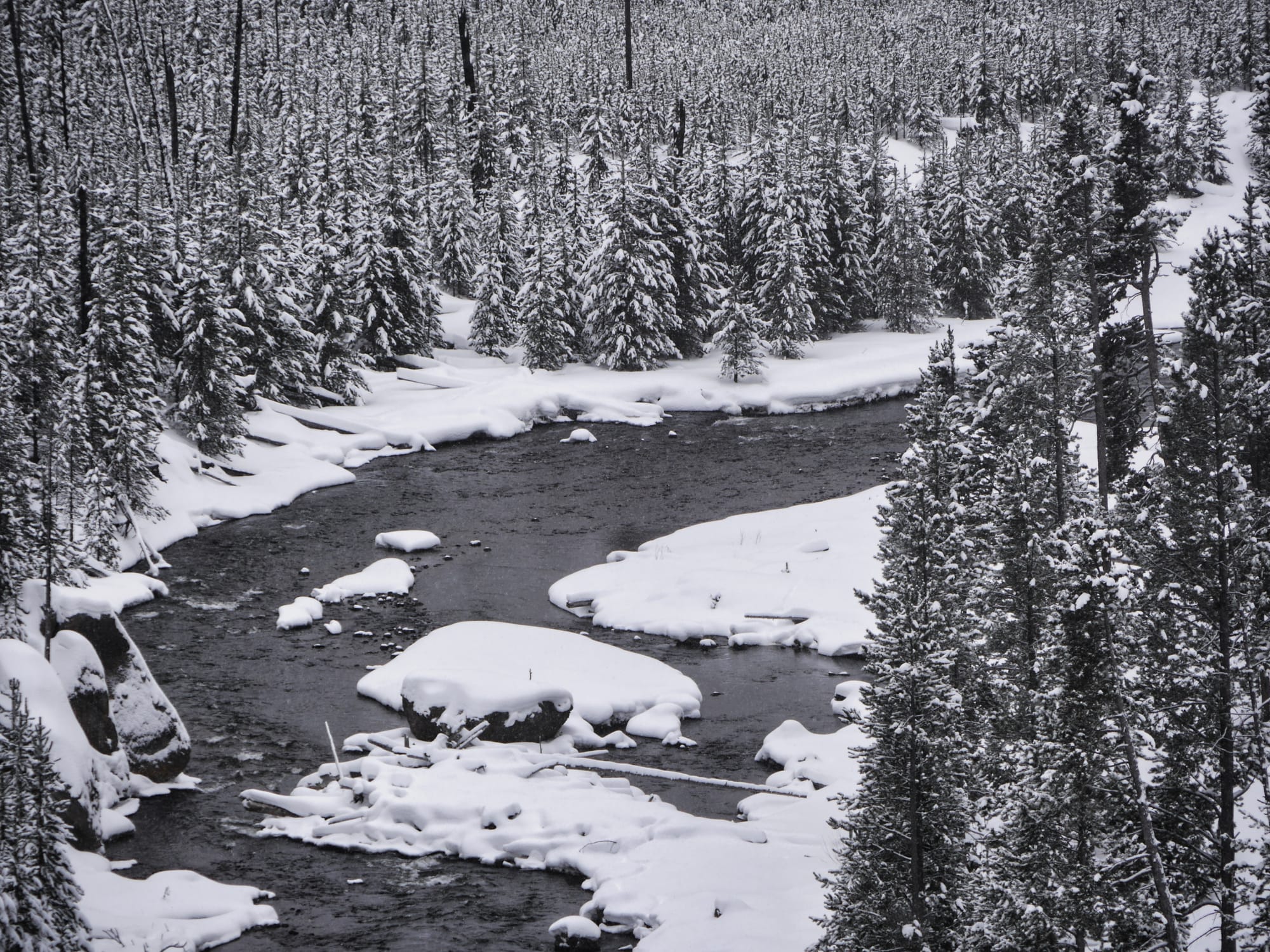
Fountain Paint Pots
The Fountain Paint Pots were the final stop of the day, another collection of stunning thermal springs.
Again, the photos do not show the Pots at their best due to the bad weather and the light failing.
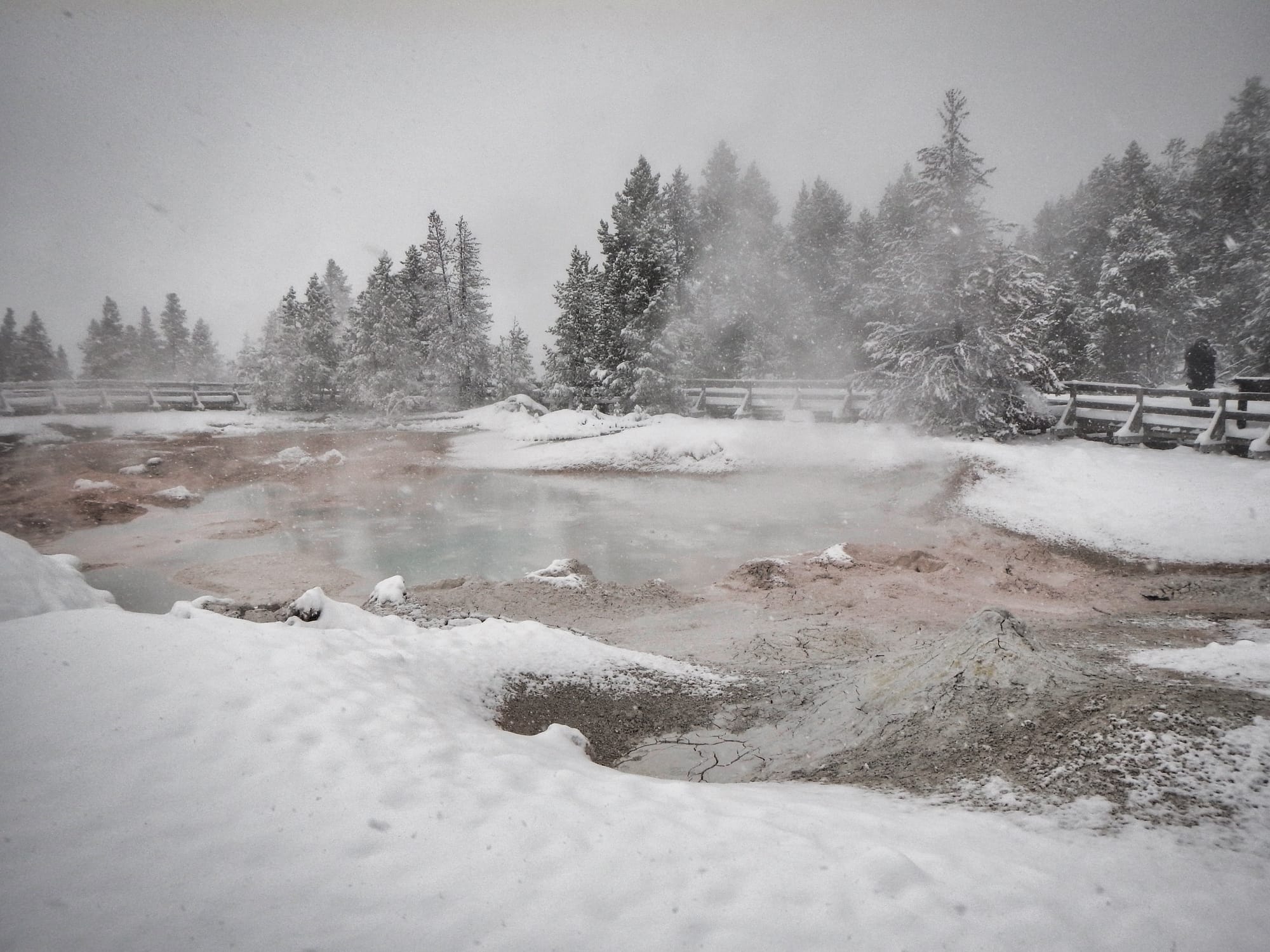
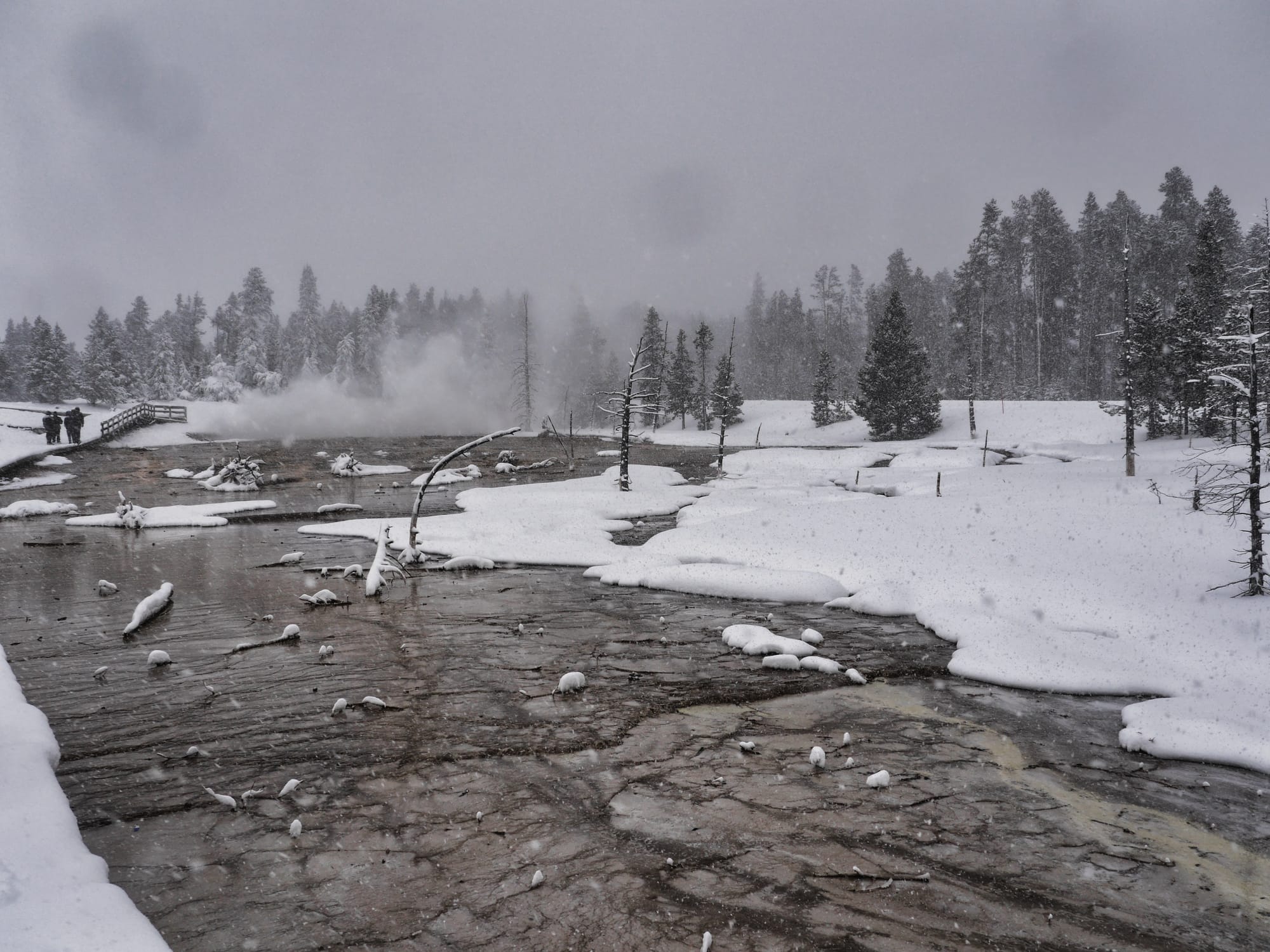
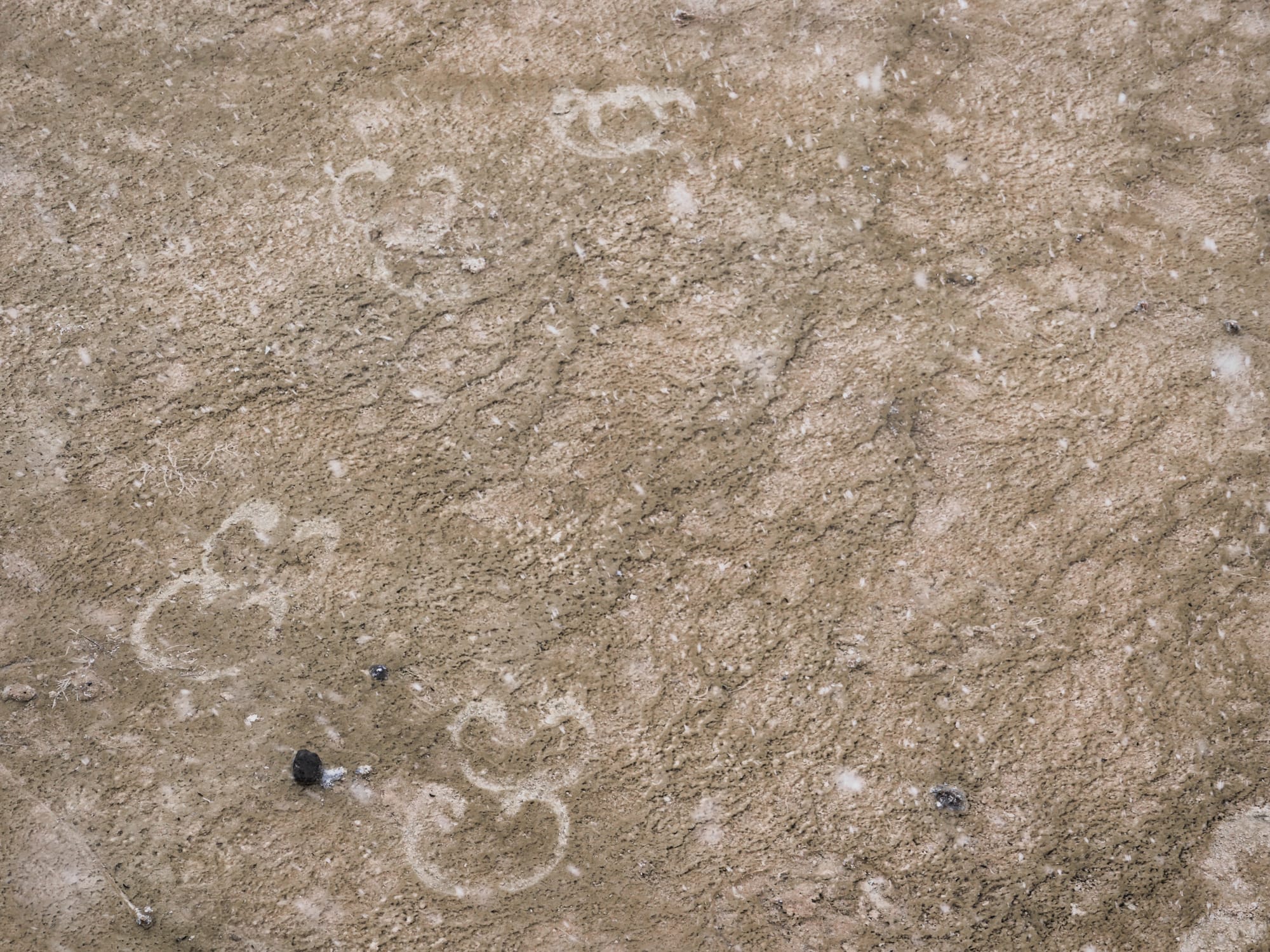
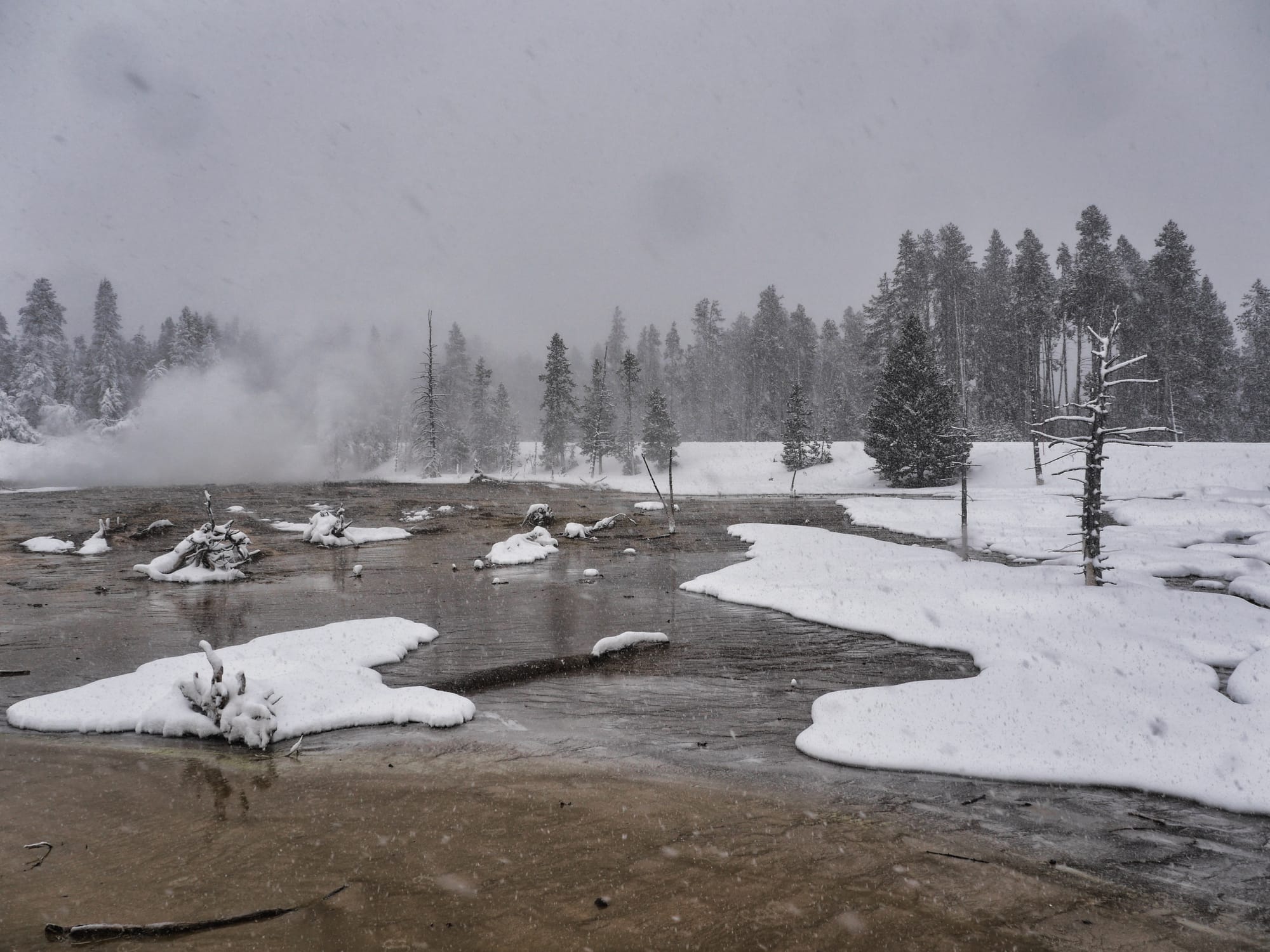
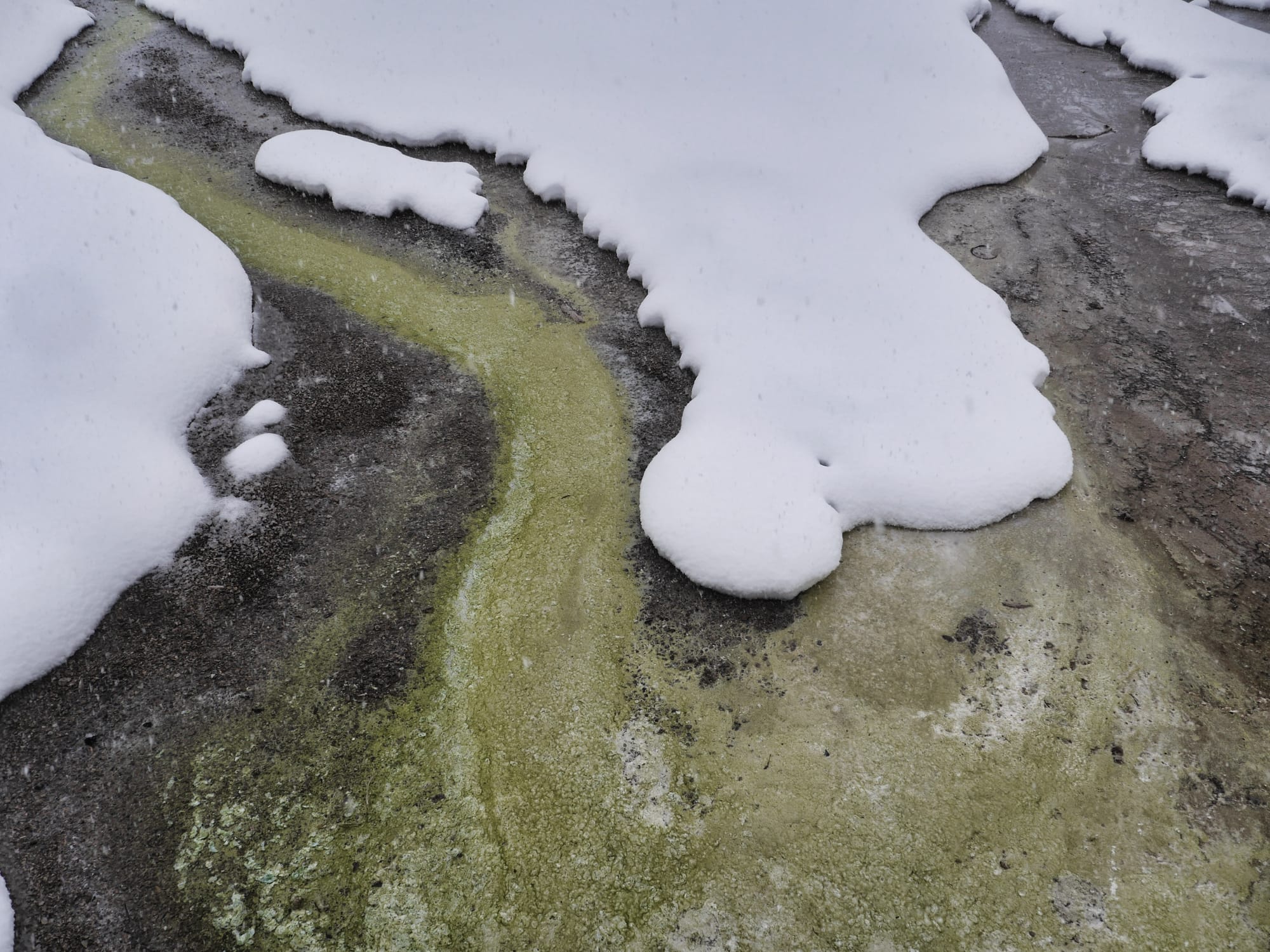
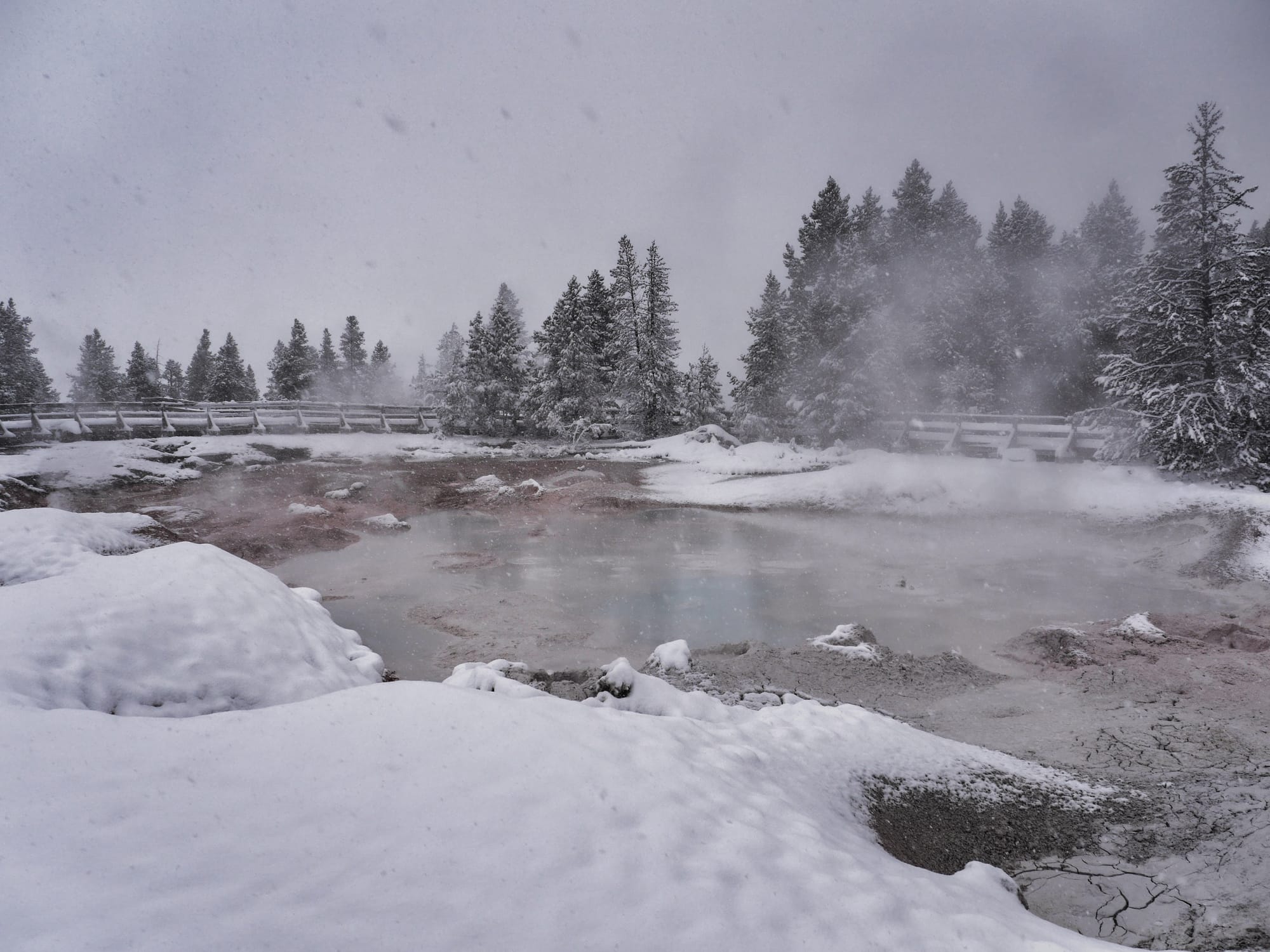
Summary for day 2
One word — WOW!
My first day in Yellowstone Park in the winter was fantastic. The sights and the sounds were unbelievable. It was amazing to visit very popular tourist spots and be there with a handful of people — a mini-bus load.
My first day exceeded my expectation. At the end of the day, I was cold, wet (we had a lot of snow) and tired, but I had enjoyed every minute. Our host was great.
The only negative was the weather. It wasn’t good. It was cold (that I could cope with) but also wet. It snowed all day, and despite suitable clothing, I still got wet. But, I suspect that a lot of that was sweat due to walking through deep snow — a real workout.
